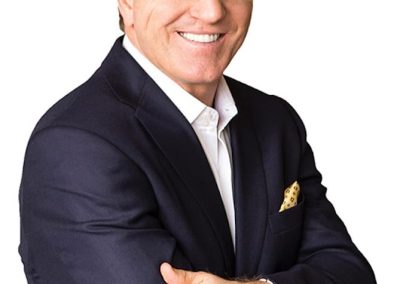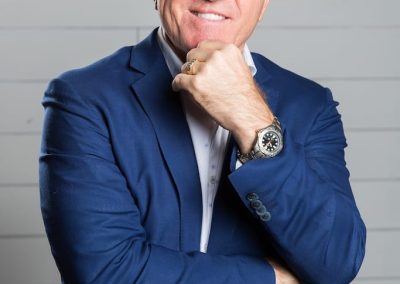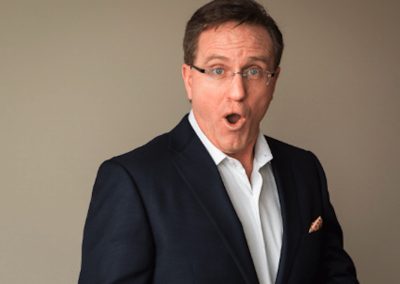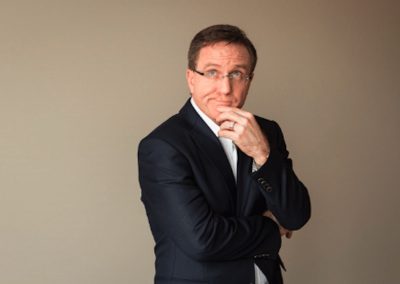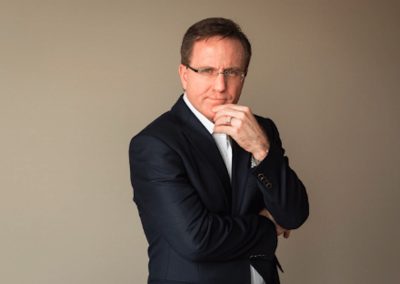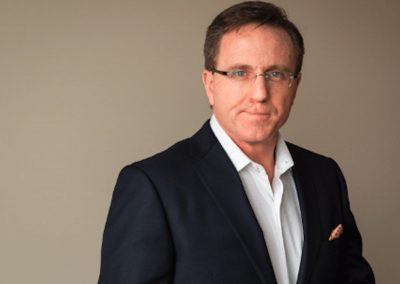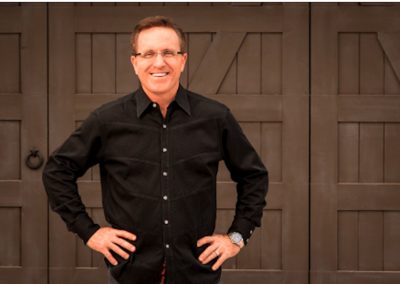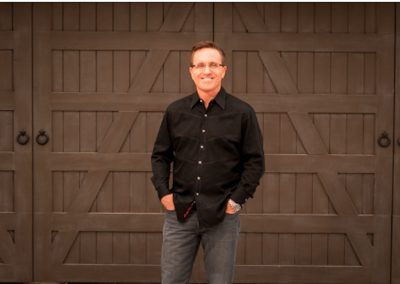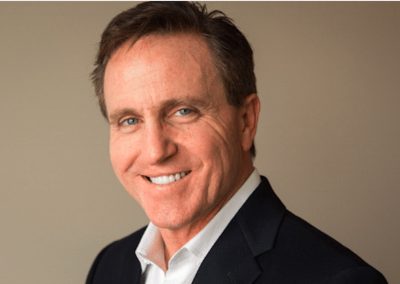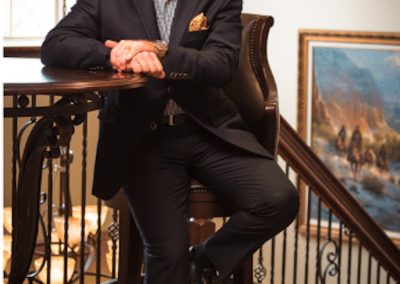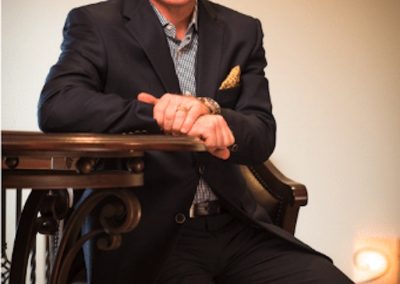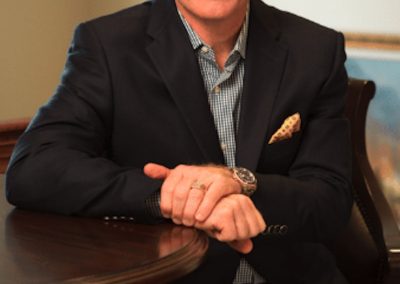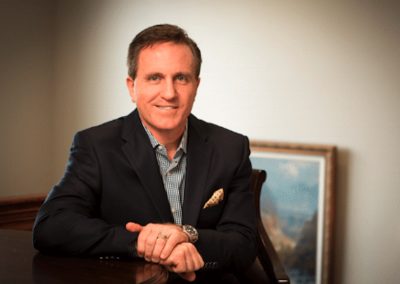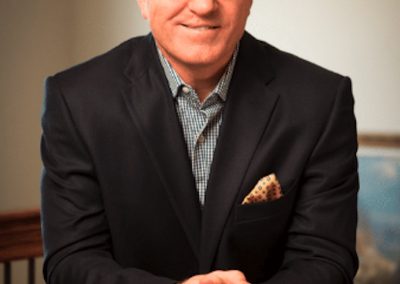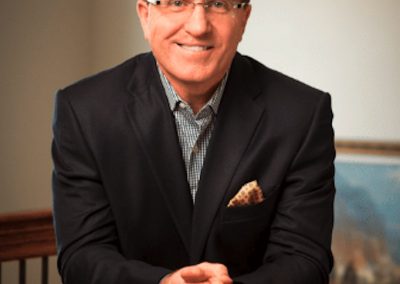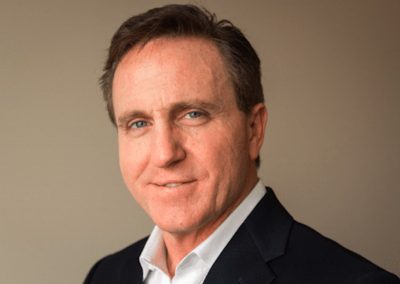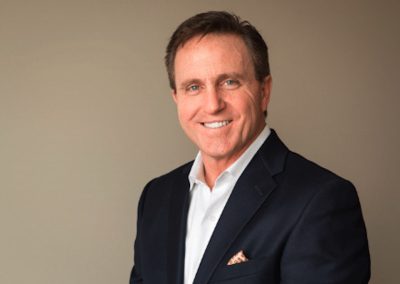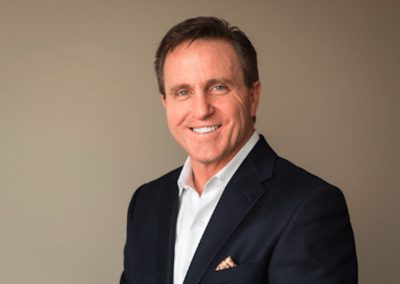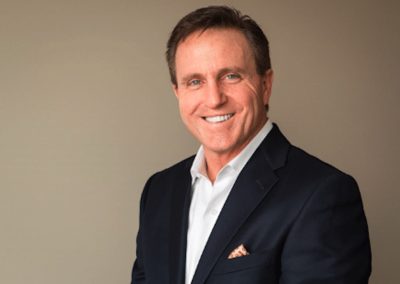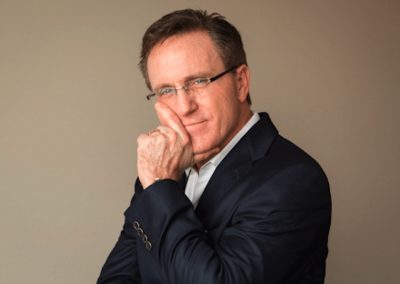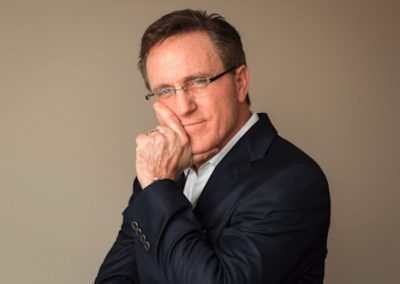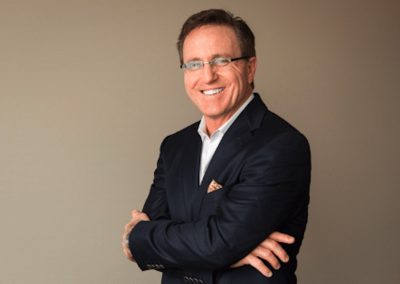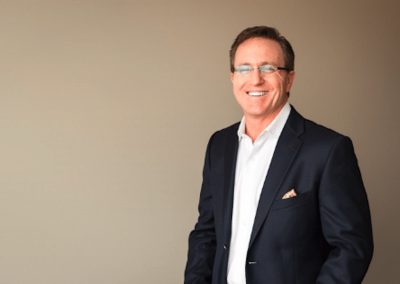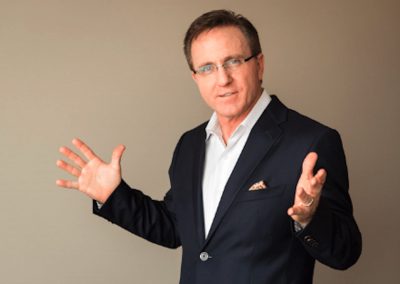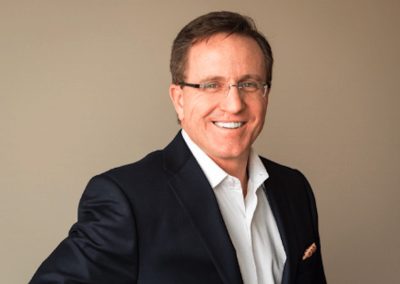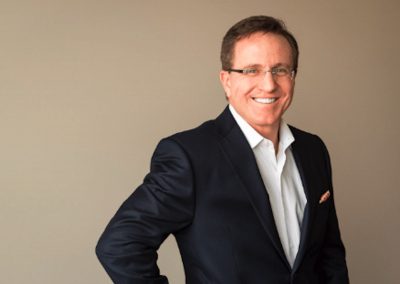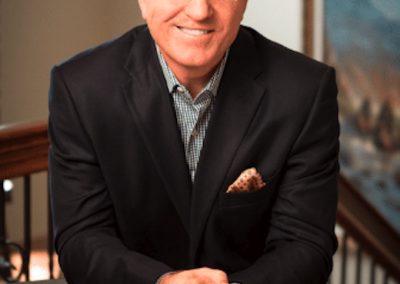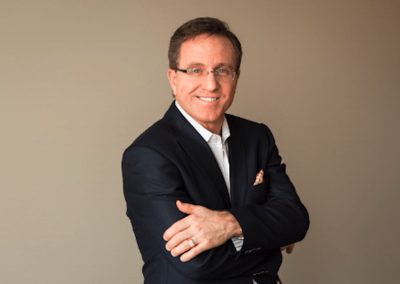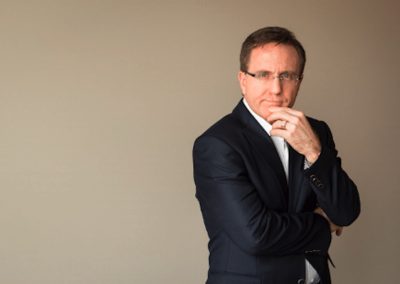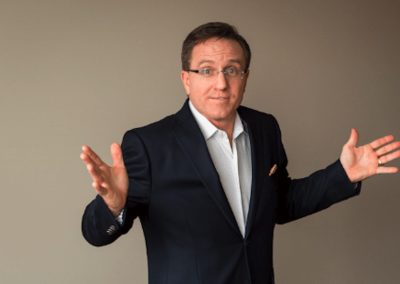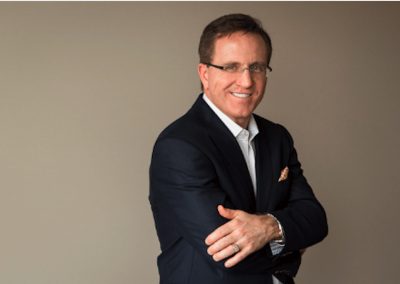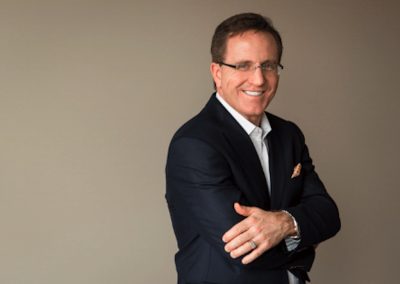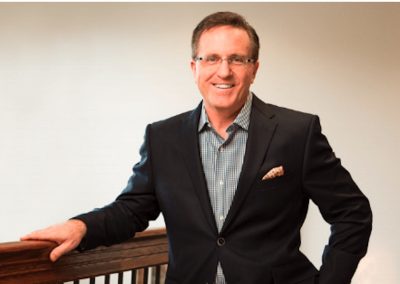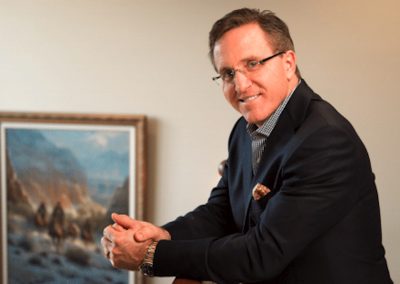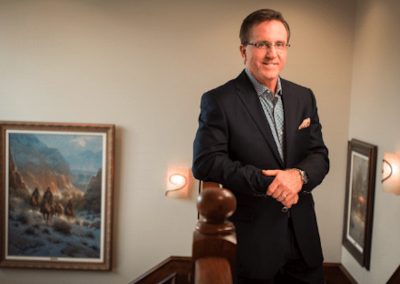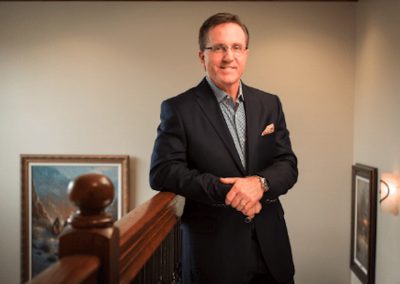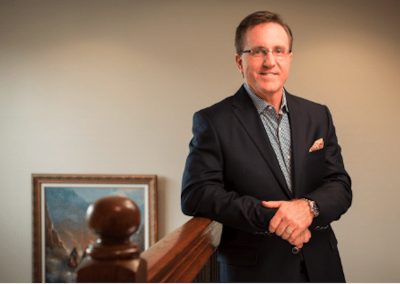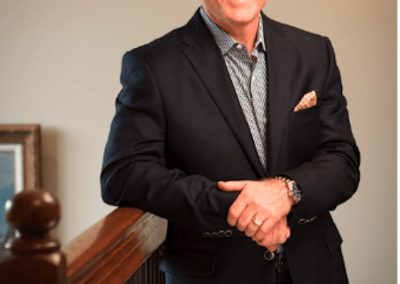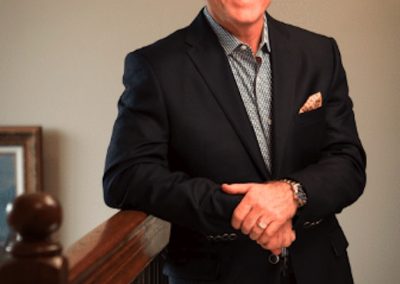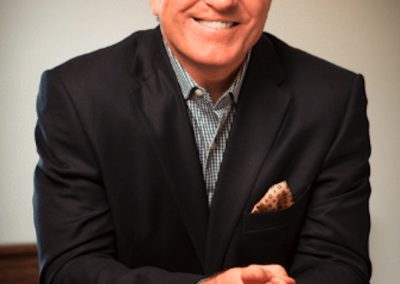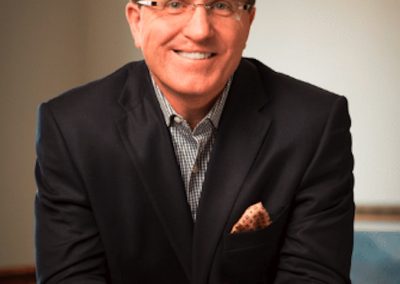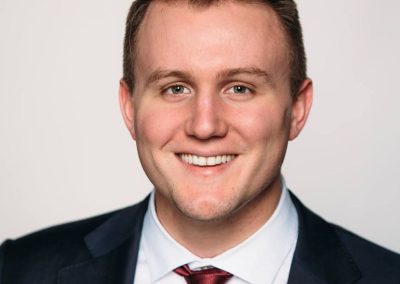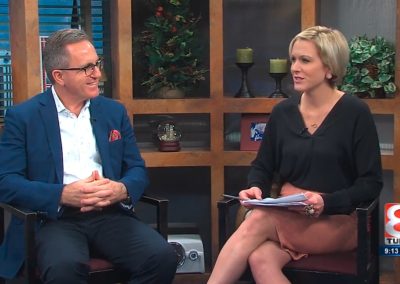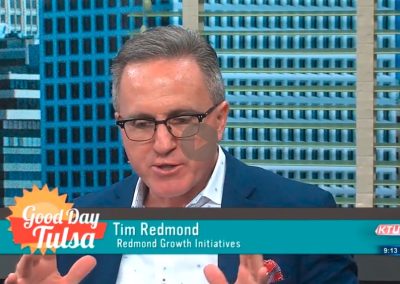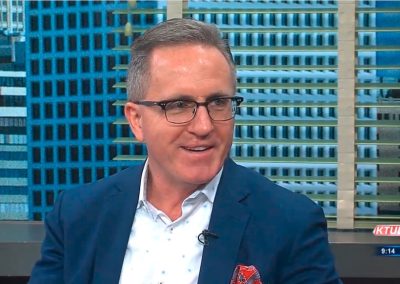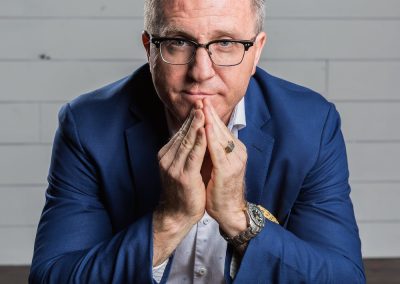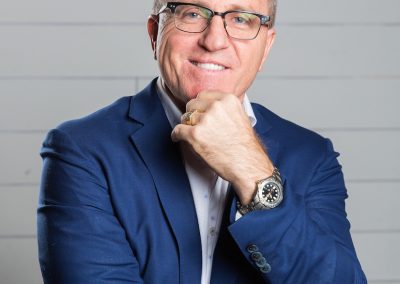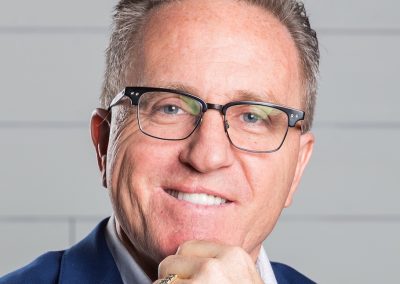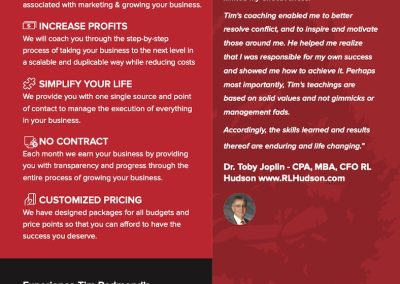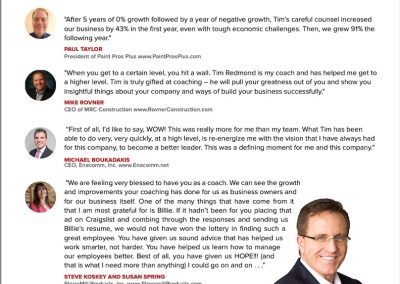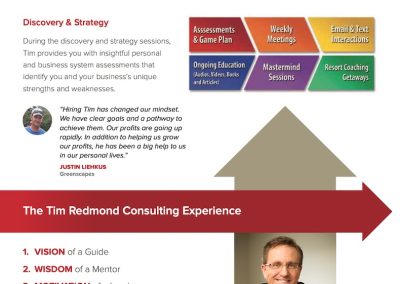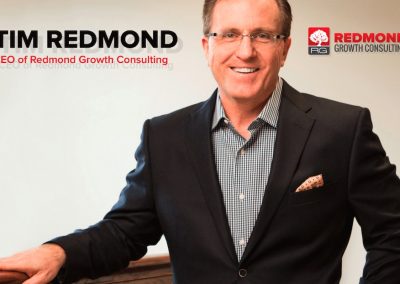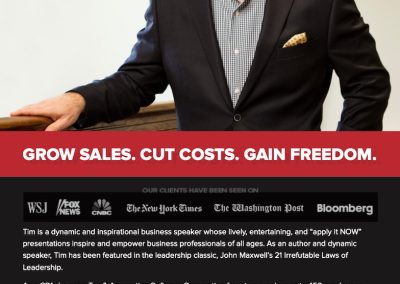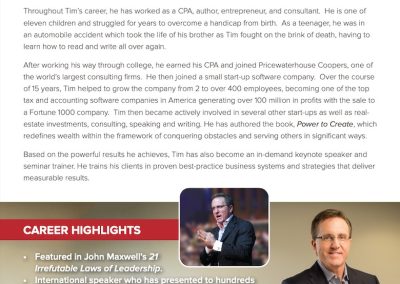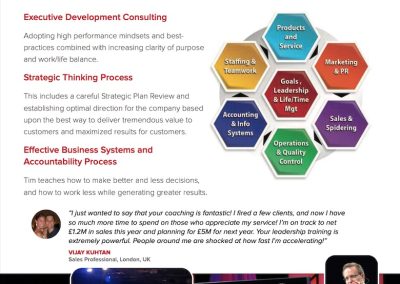Tim Redmond | “I’ve doubled every year since working w/ you.” – Tim Redmond
During the 8 Years That Clay Clark Worked With Tim Redmond, Clay Clark Helped Tim Redmond to Achieve Tremendous Success Including:
“I Would Have Anywhere from 5 Clients to 20 Clients On My Own With Networking, But I Had No Control Over It. Now We Are In Excess of 100 Clients. I Have Doubled Every Year Since Working With You (Clay Clark). It’s 100% Growth Every Year. I’ve Doubled 5 Times. I Started Coaching, But It Would Go Up And Down Clay, That’s Why I Came to You.”
– Tim Redmond of www.RedmondGrowth.com
Video Transcript
Clay Clark:
Yes, yes, yes and yes, Thrive Nation. On today’s show, we’re talking about how to build a successful trade show, how to dominate trade shows, how to make the most dough at the trade show, how to have a trade show that’s worth your time. And why I wanted to record today’s show is I have three clients right now that are doing trade shows today and all of them are asking the similar questions. And I thought, you know what I should do is I should do a brief deep dive into trade shows. And I’m joined here today with the co-host of the Flyover Conservatives podcast. His name is David Whited. David, welcome on to the Thrivetime Show. How are you sir?
David Whited:
I’m great. It’s great to be here.
Clay Clark:
So Dave, I got to ask you, have you ever been to a trade show where you were working the trade show?
David Whited:
No, I’ve never worked one.
Clay Clark:
You’ve never worked the trade show?
David Whited:
But I crossed over the age marker where they began to become appealing to me. Kind of like blue cheese or something. You just wake up one day and it smells like dirty socks. I’d like to eat that. One day, you just wake up and you’re like to walk around and look at stuff and have people selling me things.
Clay Clark:
So you’ve never worked a booth?
David Whited:
I’ve never worked a booth.
Clay Clark:
Are you serious?
David Whited:
Yep.
Clay Clark:
Okay. That’s the problem that my clients had too. So I’m going to put a lot of notes on today’s show of how to do it, but I’m going to go through the basics with you. Then on part two, we’ll really do a deep dive. Okay? So normally when you go to a trade show, let’s just establish it. I can’t believe you’ve been to them though.
David Whited:
Oh, yeah. Love them.
Clay Clark:
Okay. There’s only about a hundred vendors there. So your wife, I’m going to get your wife on mic three because we like your wife too. Okay.
David Whited:
You walking, you got the Cutco knife guy. You got people selling garage doors and hot tubs.
Clay Clark:
Yeah. So let’s talk about the trade shows. Maybe the last trade show that you went to. Do you remember what the last trade show was that you or your wife went to? The
David Whited:
Last one was geared more towards summer stuff that boats and more patio things, all that.
Clay Clark:
Like outdoor… Stacy, was it a home and garden show?
Stacy:
Yeah.
Clay Clark:
Okay.
Stacy:
It was so much fun.
Clay Clark:
Okay, so these are just rules. If you’re taking notes, please do. It’s in the show notes as well. So there’s normally a hundred vendors you’re competing with, right? There’s about a hundred and normally 80 of those vendors. Now, I want to be very clear, 80 of those vendors are usually sitting down, they’re being lazy somewhere between slothful and bored-
David Whited:
On their phones.
Stacy:
Yep.
Clay Clark:
Yeah. They’re on their phones. You walk by the trade show booth and you’re almost, you feel like you’re interrupting their deep dive into the lineup of the Falcons. They’re really getting into the Atlanta Falcons. They’re trying to finish their fantasy football thing. You feel like maybe you’re interrupting a long, maybe she’s reading an article from housekeeping or some sort of a… And you feel like, wow, this lady’s really into readers di… Some people bring novels with them and books and you’re like, man, I’m interrupting her reading of the Star Wars series.
Stacy:
I just inconvenienced them.
David Whited:
Yes. Or they’ll look up and see you and like, “Hey, can I help you with something?” And it’s like you know that you’ve interrupted their process and you’re like, I’m just looking. I’m just looking and kind of keep going.
Clay Clark:
So here are the rules. One is there’s normally a hundred vendors you’re competing with. Two, about 80 are doing nothing. All right? Three is you’ll typically be committing 12-hour days. I’m talking about full days with your team. If you’re going to go to a trade show, you’re going to send your people to be there for 12 consecutive hours. So Seth Godin, the bestselling author of Purple Cow, we’ve had him on our show before. He’s a marketing expert, bestselling author. He says, marketing is a contest for people’s attention. So what I’m going to do real quick here, and then again on part two of today’s show, we’re really going to get into all the details of this. I just wanted to test my theories on you. Okay? So one of the brands, I won’t mention their name, but I’m just going to, this is pre-Christ, by the way, so don’t judge me too much. Okay?
But they were a franchise and they went to the trade show. There’s approximately a hundred vendors there. And I said, guys, we got to dominate this trade show. And they said, “Let’s do it.” I said, “Well, here’s what we’re going to do. Our booth is going to be the tallest booth in the trade show. Everyone’s about 10 foot by 10 foot pipe and drape. We’re going to be taller. Second thing we’re going to do, we’re going to have people wearing a green outfit so they look like aliens, not creepy aliens, more of a friendly alien, like a green, like a neon green alien sort of suit sort of thing.” And these people are going to be walking around because our phrase was “we’re the greenest.” The company I worked with was the most environmentally friendly. Okay, makes sense. So we’ve got people walking around in a full, and I’ll show you a visual here, but I won’t mention the company’s name because I just want to make sure that I’m not sharing any secrets that I’m not supposed to share on today’s show. So we’re going to look it up here and just so you can see the guy, and there he is. Yeah. So this guy’s wearing this suit and he’s everywhere running around-
David Whited:
Like, blue man group, but green.
Clay Clark:
Right? But he’s in green full, you can’t really see his face. His whole body’s a green, almost like a green onesie. And he’s running around with his onesie running around. And so the idea is, and there’s about, we had three guys in the trade show running around wearing this.
David Whited:
You do have to be built [inaudible 00:04:33]-
Stacy:
So everybody would notice them.
Clay Clark:
Right.
David Whited:
I don’t know that that’s a slimming outfit. You’d have to be built. There’s-
Clay Clark:
Well, we have three rando college guys they’re running around in the green suit.
David Whited:
That’s good. That’s a good demographic.
Clay Clark:
And on the back of their shirt, so when they wear it, people kind of mess with people. And on the back they’ll tape a sign that says, kick me. On their backs it said, “Follow me for free drinks.”
David Whited:
Okay, that’s appealing.
Stacy:
Yeah.
Clay Clark:
So people are seeing, there’s free drinks, free beverage, and then our booth, which was the tallest, we put, ask us about how to get free drinks. Now, if you’re in a trade show for, in this case, three consecutive days, what booth is everybody going to go to? If you came to a trade show and you as a consumer are going to be there for three days at this exhibit, what is the booth that most people are going to at least remember?
Stacy:
The one with the drinks.
Clay Clark:
Right, and?
David Whited:
The green guys.
Clay Clark:
And?
David Whited:
Snacks.
Clay Clark:
And?
Stacy:
The tallest.
Clay Clark:
Tallest, yes. And so what happens is people are like, what is this? It’s almost like a wow. Even if you’re not Mormon, you kind of want to see the temple in Utah, right?
David Whited:
Help me understand this too-
Clay Clark:
It’s like the arch in St. Louis.
David Whited:
I’m not picturing it. So everybody I know what the pip and drape, the 10 foot walls and then they got the vinyl wall. What’d you do to make it taller? Did you stack them or did you have a flag or a pole or how’d you make it? What did it look like?
Clay Clark:
Yeah, I’ll show the design here real quick here. So you can kind of get an idea from-
David Whited:
You could even describe it. I’m not picturing a bigger booth.
Clay Clark:
Well, let me just show the moves. I’ll show you a picture. I can’t show the people necessarily this photo. I’ll try to weave this photo in here. But you see how this right here, you got the pipe, the drape, okay, and I just made the, you get this, it’s trussing and you rent the trussing and you crank it up, and so it’s taller. You fill in the flow.
David Whited:
Yep. So it’s a purchase structure. You’re raising it up bigger than everybody else.
Clay Clark:
And then why do I have bistro tables and not chairs, Dave?
David Whited:
Well, for one, probably the people working it, there’s no opportunity to sit unless they sit on the floor
Stacy:
And read a novel.
Clay Clark:
Right. So the way it works is we have just 1, 2, 3, 4, 5, and we ran a play. It’s an actual diagram, and I would role play with my team about the play. It’s the move. Okay, this is serious stuff. Okay? We got a point guard. Their job is to distribute the customers to the various members of our team. So if you’re walking by my booth, I’m going to go to a company I own so I can be more detailed. Now, a company I used to own called Epic Photos, okay? So Stacy, you’re the mother of the bride, you’re walking by and this is what I’m going to say. “Hey, are you guys looking for a wedding photographer?”
Stacy:
Absolutely.
Clay Clark:
And I’m going to say that probably a thousand times. And if you say absolutely, I go, “Well, let me bring you back here to my mobile office and to my guru Super Dave, and he can take 30 seconds to tell you what we do.”
Stacy:
Okay?
Clay Clark:
And we got that going on.
David Whited:
What if they give you an answer like, “Oh, maybe in the future, not the moment.”
Clay Clark:
We go, “Thank you for your time,” and we move on. I only want to talk to people that are getting married who are looking for a photographer. Right? Now, the other move I did for this company, it’s a powerful move, is you have a screen and it shows videos of Hawaii. And I wish I had a visual to show you here. So you got brides and grooms getting married, but you got drone footage of Hawaii, right? And I get my booth and this image I have doesn’t show it. I wish I had one I could show you, but it’s the tallest booth and it says, “Ask us how to win a free trip to Hawaii.”
Stacy:
Oh my gosh.
Clay Clark:
So let’s do it again. But imagine you walked into the booth and you saw that Hawaii thing, you’re with your daughter. Okay, so here we go. Role playing again. Here we go. So “Hey, are you looking for a wedding photographer?”
Stacy:
“Yes, absolutely.”
Clay Clark:
“Yeah. Well, step on into our mobile office and Dave, he’ll take 30 seconds to walk you through what we do. And he can also tell you how you guys can win a trip to Hawaii.”
Stacy:
“Are you serious for honeymoon or something?”
Clay Clark:
“Yeah, it’s really fun. What we’re doing is we’re doing free bridals or engagements for every single woman who’s here, every bride. So it’s free bridals, no cost, no obligation that way. It’s like a try it before you buy it. Also, we have a price match guarantee, meaning that we will price match everybody here, plus we’ll beat their price by 5%. So price beat guarantee, we’ll beat anyone’s price by 5% and you get free bridals or engagements, no cost. And just by scheduling it, you’re entered in for the chance to win the dream Hawaiian vacation. It’s a $5,000 package and the way it works is we’re going to give away the winner after we shot all the bridal shoots. So you could probably have a one in 300 chance. Would you like to schedule a free bridal or engagement?”
Stacy:
“That’s like a no-brainer.”
Clay Clark:
And that’s… There it is. Okay, we go back to it. So one, you got to have the booth that’s the tallest. Everybody out there steal these ideas. I’m giving you these ideas. Have the booth. That’s the tallest. And why, Dave, do you want the tallest booth?
David Whited:
It stands out from everybody. And if you stand out visually like that, then you’re probably better and bigger and-
Clay Clark:
There it is.
David Whited:
Yep.
Clay Clark:
Two.-
David Whited:
More trustworthy.
Clay Clark:
… Don’t let your people sit in the booth and you have to memorize this phrase, learn this phrase, practice this phrase. So if you’re trying to sell one of my clients, today’s trying to sell home remodeling. Great guy, by the way, his booth is looking good and I hope he hears this show because he has a good looking booth. Oh, it’s beaut. In fact, I’m going to send this show to, we’ll call him Ronnie because that’s his name. Okay? Code name Ronnie, code name, okay, I’m going to sit, this is his booth. It’s a beautiful booth. He just designed it and it looks sharp. It’s so sharp. You’re going to cut your eyeball looking at it. I mean you got to be careful when you look at this thing. It is a hot booth. This is his booth and it’s kind of-
Stacy:
That is a good looking booth.
Clay Clark:
Look at that booth. It just says, “Please let us remodel your house.” I mean, just a beautiful, and so this is his first big trade show he’s done, and I really wanted to record something for him and for people out there that are doing trade shows, you look at that, look at that. Oh, look at that. Look Dave.
David Whited:
That’s nice.
Clay Clark:
So he’s in a big arena. Aren’t you going to at least stop by?
Stacy:
Definitely.
David Whited:
You got the lighting.
Stacy:
Everybody wants their house to look like that.
David Whited:
Our producer at the Flyover Conservative podcast, Colton, he has one of those autonomous desk stands and he has this plaque on. It says, “First you sit, then you quit,” standing changes the way you talk, changes the way you’re doing everything.
Clay Clark:
There, I agree.
David Whited:
Having no chairs, I used to work at a restaurant, the manager of this motto, “If you got time to lean, you got time to clean.”
Clay Clark:
There it is.
David Whited:
It’s this moving standing,-
Clay Clark:
It’s powerful.
David Whited:
… there’s energy to it. Versus when you walk by, you can tell the energy’s low.
Clay Clark:
I’m going to make sure we’re getting this idea. Make sure we’re really learning something here. I’m putting all the notes on today’s show notes. But again, you got to have the booth that’s the tallest because you understand you’re competing with a hundred people and I don’t care how motivated you are, you’re probably going to only going to talk to 20 booths. You’re going to get worn out. So you get a booth that stands out, you got to stand out. Then what you got to do, step two is you’ve got to have, it’s marketing as a contest for people’s attention. You’ve got to have a no-brainer. And why would I say Dave, to someone like Stacy, I would say, “Well hey, step into our office and Dave will talk to you for 30 seconds and tell you what we do and how to win the trip.”
Stacy:
Yeah, because then you’re not going to be there all day. You know that. Yep. It’s perfect.
Clay Clark:
It’s the move.
David Whited:
Because you have a wall like, “Ah, I don’t want to waste all my time talking to this person.”
Clay Clark:
And nobody has these thoughts. I’m not exaggerating. I used to go to these trade shows, Dave and I would sell at the trade show. Sorry if I’m blasting your ears there. I would go to the trade show and we would have, no exaggeration, we have a line of brides wanting to book appointments and we would leave the trade show and I pay my guys, this is important. People need to write this down. You pay your staff per appointment they set, or per review they get, or per, there’s got to be a merit base pay there.
Stacy:
Merit base. Yep.
Clay Clark:
There it is. So I tell my guys, every appointment that you set with a bride that actually books with us, you’re getting a hundred dollars. So if she books us, you’re making a hundred dollars. Now if the bride-
Stacy:
That makes them want to sell it more, that makes them want to be there. They’re not on their book because they can’t sit down anyway,
David Whited:
That’s more interesting than the football lineup.
Clay Clark:
It is.
Stacy:
Yes.
Clay Clark:
And you say, “Hey, every time that you gather an objective Google review from a bride who’s checked out our gallery of photos, I’m going to give you $5.” So that rep can get 130 reviews, 140 reviews in two days. They’re also able to book 20 to 50 really solid leads. It’s a win-win. And every vendor’s like, how is this possible? It is awesome and we would dominate trade shows, but by default, let me tell you what you won’t do. You’re not going to have the tallest booth. Why? Because you don’t want to be embarrassing. You don’t want to stand out. What are people going to think?
Stacy:
Why waste your time?
Clay Clark:
Why waste your time? But Dave, what is it that makes people want to not stand out? I mean, every time I talk to them, and I’m not talking, Ronnie, I’m not talking about you, Ronnie, this is not about you. This, this is not… Me, Ronnie. A lot of people say, “I just don’t want to stand out.” Why? Not Ronnie, other people.
David Whited:
I just think we’re groomed for that in school, you don’t want to do anything wrong. You don’t want to get called out. You don’t want to draw a lot of attention. If you’re in a meeting, your phone goes off, you don’t want to be looking at you. You don’t want to be different than anybody else.
Clay Clark:
Isn’t it weird.
David Whited:
Yeah.
Clay Clark:
It’s weird. But that’s how it is.
David Whited:
Also with the structure, I’m looking at Ronnie’s pictures and what you did before, banks project that “we’re solid, stable,” they got the big, they project this image of stability. When you see a booth like that, you’re like, these guys, if they have a booth this good, they must know what they’re doing.
Clay Clark:
Exactly.
David Whited:
You wouldn’t have this great booth if you just started yesterday and you were a flake.
Clay Clark:
And why I wanted to talk to you about this on today’s show is because you guys have a really good booth that you do when you guys go to broadcast at events and it looks to be structurally sound, visually sound, you put time into it, you could do project half-assed, but if you’re half-assed, your whole life is terrible. So I want you to write that down. But if you’re half-assed, your whole life is terrible. So you guys took the time to do it, and I hear all the time from people, this is a real, really… People that come to our conferences will say, “Hey, I want to get on that show.” They’ll tell me, “How do I get on that show?” And I’ll say, again, I like to fish just to see, because I like to learn from these people. I go, “Why do you want to be on that show?” They go, “Oh, it just looks like a great show. It looks like a great show.”
David Whited:
They don’t ask how many views you got, how good the interviewers are. They do judge you based on if you’ve got some lights pointing up, if you’ve got the air… We’ve put up so many of those air walls around, it looks like the Grammys.
Clay Clark:
Right?
David Whited:
It looks like you’re walking up to an award show.
Clay Clark:
It makes people excited to be on the show. So again, folks on part two of today’s show, we’re really going to get into the nitty-gritty of this really into what do you need to bring to the trade show? There’s a big list of stuff. You have to bring linens and bistro tables and it’s a big, my checklist that I would bring to my bridal shows would typically be about 50 points when it’s all said and done. I mean, I’m talking about power strip, backup, power strip backdrop, ratchet straps, heavy sandbags. I mean there’s a lot. But the big thing I wanted to talk about while you two were here and I wanted to get your final comments, then we’ll get into part two here, is Stacy, it’s like people, they get a trade show booth, and I’m not talking about you, Ronnie. They’ll get a trade show booth and they make a weak booth and they don’t have a strategy and they go, “Well, I didn’t really get any deals.”
And I talked to a guy, talked to a guy about a year ago, longtime client of mine, great guy is in Texas. He says to me, I said, “How much would your trade show? How much did it cost you?” “Well, I spent about 25,000 on my booth,” said, “Did you get any deals?” “No,” I’m going, “What?” And I didn’t know he was doing the trade show, so I couldn’t prep him for it. He just went and I’m going, “Did you have the tallest booth?” “No.” “Did you have a no-brainer?” “No.” “Did you have… Were your guys sitting down all day looking at brochures?” “Yeah. Why were you there? What were you there? How did you know?” Because that’s what happens by default. So you got to have a plan coming into it. So as a consumer, what advice would you have for anybody out there who’s listening today and they’re going, you know what? I do need to make a great trade show booth. What advice would you have as a consumer attending a trade show for anybody out there who’s thinking about building a trade show booth?
Stacy:
Yeah, I actually have a personal story though about that, Clay with our booth, why we actually created the booth that we have for the events now, we actually played small at the beginning and very few people actually wanted to come on our show and we had a nice size show, but we played so small it didn’t look like it was. So the next event we decided we are going to go all out. We’re going to have all these air walls, all these lights, it’s going to look so impressive. We did 50 interviews in two days, and because people, they want to get on our show. And so I just think it’s so important what you’re saying, don’t play small, play big, go all out. And so if I’m a consumer, I’m going to be looking for the people that they look professional, they act like they want me to be there. And like you said there, they’re not going to be wasting a lot of my time. I love what you said there about, “Hey, give us 30 seconds,” because when you name that people are like, “Okay, I could do that.” And then the no-brainer, I mean all of those things, that’s what I would be looking for as a consumer.
Clay Clark:
I mean I used to get excited about it. If we had a trade show on a Saturday, I would tell my team, we’re going to role play on Thursday night. Oh, yeah. And they’re going, “You got that crazy eye. What’s going on?” “We’re going to role play,” and we would role play until the team couldn’t get it wrong. Then we would descend like an army. We’d have 10 of highly trained people show up at the trade show and we’re asking the brides, “Hey, are you looking for a wedding photographer?” “No.” “Okay.” “You looking for a wedding photographer?” “Yes.” “Okay, yes. They say yes.” The point would bring them back and go, “Well, let me introduce you to Dave. He’ll take 30 seconds to tell you how to win a dream vacation to Hawaii and how to get free bridals and engagements, Dave,” boom and that the point always stayed out in the hallway.
And when you’re walking by, they’re always right out front. They’re always the one who’s right. They’re kind of in the booth and they’re fishing for people to bring them back the day just blew by 90 miles an hour. We never got slow, never got bored. It was unbelievable. And if you’re out there listening today and you’re doing a trade show and your trade show does not produce fruit and you’re just tired of having a horrible trade show, listen to today’s show. And if your name is Ronnie Coate Morales, this trade show, sir, you are going to have a great weekend. You’re going to dominate and I encourage you to listen to this show while you’re setting up on the way home after day one, whatever, because you’re going to have a dominant weekend. But this is how you do it.
David Whited:
Everything that you’re saying too, it’s much more process dependent than personality dependent. I think a lot of people when they’re thinking of doing a trade show, they’re thinking of doing something, they’re like, “Well, I’m not wired. I’m not a real outgoing person.” And what most people do at trade shows, you’re walking by, they try to build rapport, make a great friend like, “Oh, look at that sweatshirt. You like the chiefs? Me too. And man, there’s some nice shoes you got there, I got…” and it’s this big long drawn out thing. I’m more likely to stop and talk to somebody if they have a plan and they give me a timeframe, they’re like, “Hey, you got 30 seconds to do this?” I would do that, but I kind of avoid the people that are trying to make a best friend so they can friend me into their circle.
Clay Clark:
And I hate to see people be unsuccessful at a trade show. And I’m going to walk you through all the details of this. There’s so much into it. I mean, we talk about the goal. This is stuff I go with my team, get the attention of the ideal and likely buyer, tell them the solution, find the problem, tell them the solution. Call to action. And I tell my team, have meaningful conversations, no meaningless conversations, no small talk, none of that. “What do you think about the chiefs? How are you doing? Great hair.” Do your point, it’s just like, “Hey, are you needing a wedding photographer?” “Yes I am.” “Great.”
David Whited:
To me as a consumer, I know they’re just doing that to try to get me in so it-
Clay Clark:
Feels dirty.
Stacy:
It does.
David Whited:
It does.
It’s not authentic.
Clay Clark:
And what you do is you just set appointments all day. I get my team quotas. Everybody on my team knows how many appointments they need to set just to break even. Folks, there’s so much stuff we’re going to learn on today’s show. Get excited, get yourself ready to go. Get out your pen and a pad, prepare to take notes and enter into the Dojo Mojo Fo’ Sho’. My name’s Clay Clark, right here on the Thrivetime Show. And a quick reminder, if you haven’t subscribed to the Flyover Conservatives podcast, it’s either A, because I’m a bad marketer, or B, because you hate yourself. So stop hating yourself and subscribe to the Flyover Conservatives podcast today. You can find them on Rumble, iTunes other places. It’s a blasty blast. That’s the flyoverconservatives.com. Flyoverconservatives.com.
Speaker 1:
3, 2, 1. Boom, broadcasting live from the center of the universe, presenting the world’s only business school without the BS, with optometrist and entrepreneur, Dr. Robert Zelner and USSBA entrepreneur of the year, Clay Clark. Get ready to enter the Thrivetime Show on Talk Radio 1170
Clay Clark:
All right, Thrive Nation, welcome back to the conversation. Today we are talking about trade shows, trade shows and trade shows. You see, a lot of people want to go to a trade show to pick up new business to gain new clients. And so what we’re teaching you today is how to dominate trade shows. You see, there’s usually a hundred vendors at a trade show or more competing for the attention of the customers. And I would say that at a typical trade show, there might be 80 to 90 of the vendors that are usually just going to be sitting by lazily sitting down in their booth while dispassionately passing out print pieces in brochures,
David Whited:
On their phones-
Clay Clark:
On their phones, right. But yet you’re taking typically two to three full days of your team’s time. I mean, your team’s going to be there like 12 hours a day for two to three days in a row.
And so if you’re going to go to a trade show and invest the time for two to three of your people to be there all day, I mean that’s a massive commitment of time of your team and resources where you’re not doing something else. If you’re going to commit that much time to something, you might as well, I might as well just nail it. And so here are the things that your coach would help you work through that you’d really want to come to grips with and know before you go to the trade show. So one is you want to know the break even point for the show, Marshall. You need to know the number of deals that you need to have for the show to pay for itself. Why do you have to do that? Marshall?
Marshall:
A lot of business owners, they’ll go to these trade shows without any clear idea of what a success at the trade show looks like. And so you define what that success is by knowing the number of deals, the approximate profit that you would need to make from all of the deals that you generate from the trade show in order to get to that goal.
Clay Clark:
And you have been to the Dallas Bridal show, over there, right across the street from the Anatole Hotel in Dallas area. And you’ve been there, you’ve worked in the booth for the companies I’ve had in the past, DJconnection.com as well as Epic Photography. You’ve helped your clients in all different industries to do well at trade shows. But when we went to the trade show in Dallas, the Dallas market hall, there was about 250 or 300 vendors I believe, and you have to stand out, but you also have to know the breakeven point. So in your mind, you knew you were trying to book what one bride per hour?
Marshall:
Yeah.
Clay Clark:
So, one bride per hour. So the second step is you have to have a quota for each teammate. So when I’m at the show and you’ve worked a booth with me or you’ve worked a booth with our team, I mean, we’re not sitting around are we? I mean, we know how many we have to get to.
Marshall:
No, the difference is a lot of business owners and other vendors are just sitting there passing out these flyers and they don’t care whether or not somebody comes to their booth or not. In fact, we kid around when we were down there. How do some of these vendors come back year after year after year?
Clay Clark:
Well, we just got our name out there. Just got our name out there.
Marshall:
So, if you need a book one per hour, that means that you got to set five appointments per hour, which means that you got to talk to probably about 10 people per hour, which means you got to get rejected about 20 times per hour.
Clay Clark:
We’re just getting our name out there.
Chip:
And setting quotas is a thing I see a lot of people not want to do holding their team accountable, and you’ve got to place a sense of urgency with those team members that are working your booth. Or they will fall into the same thing everybody else is doing. They’ll start talking to the people at the next booth. They’ll be sitting there on their phone. They have to know, “Hey, we have got to sign up, like you said, one an hour,” or whatever that is.
Clay Clark:
So at the Dallas Market Hall, there’s about 300 vendors and it costs us all in to rent the booth. It’s about a thousand dollars for all the decoration and stuff to put in the booth to set up. It’s another a thousand or $2,000. And then to pay the team to be there all in, it’s about five grand to go to a show. So I know specifically how many weddings we have to book to make the show pay for itself. The third thing is you have to have a game plan that’s proven to work and your coach will help you through the game plan. But this could be a very, very long training session because there’s so many details to master, which is why we have a ton of videos available for [email protected] or putting a link to those videos on today’s training because there’s a lot of details, but you have to have a proven game plan to make the trade show work.
Then the final thing you have to have is you have the willingness to actually train your team until they reach a level of excellence before attending the show. Marshall, you’ve seen me role play with the team. We’re training, we’re setting up the system in Tulsa. We’re setting up the equipment, we’re setting up the trussing, we’re rolling out the flooring, we’re putting out the bistro tables, we’re putting up the TVs, we’re taking down the TVs, we’re setting up, we’re role playing Marshall. We get to a level of excellence before we’ve even got outside of our own building, let alone shut up at the trade show. We’re not training people at the trade show. We’re training people before we get to the trade show.
Marshall:
That’s right. I’ve never seen this process take less than 10 hours.
Clay Clark:
Yes.
Marshall:
So you got to ask yourself, when am I blocking off 10 hours of dedicated training for how to talk at the trade show? And so you got to make sure that you’re putting this in the schedule. This is training time with your team. Anybody that’s going to the show had better be trained.
Clay Clark:
Know what you have to do, before you invest all this time is I’d recommend that you would find the best trade show in your industry. And you would find that by calling the top vendors in the industry and asking them if the show is in fact good, because there are so many crappy-
PART 1 OF 4 ENDS [00:26:04]
Clay Clark:
… fact good, because there are so many crappy trade shows out there. I would argue that for every five trade shows there are, probably four are crappy and terrible and should not exist. So you don’t want to go to a mobile pop-up flea market, you want to go to a trade show where that it will be populated by your ideal and likely buyers. If your ideal and likely buyers are not there, then there’s no point to going. Now, once you get there, you have to get the attention of the ideal and likely buyers. Seth Godin, the bestselling author and the man who sold his company, Yo-Yo Dine, to Yahoo for $30 million once wrote, “You are either remarkable or invisible.” So what you want to do at the trade show is you want to stand out. You want to make sure that you stand out, so I’m going to give you three really easy moves you can do. One, you could make your booth taller than every other booth.
Chip:
I love that move.
Clay Clark:
It works really well, and all you do is you make it taller than every other booth. There’s a company called Omni Lighting, that’s Omni Lighting, they will rent you all the materials you need. There’s also trade show booth companies that will do this for you. Then you put up lights or there are LED lights that shine and get people’s attention. That works. Another move you could do is you could have a big sign that says, “We’re giving away free lunch or free drinks or free” whatever, and people will come to your booth for the free drinks, the free lunch, the free whatever. That’s a move. And the third move you can do is you can create kind of a party atmosphere. You can have music playing, you can have your team dressed up a certain way. I’ve seen fitness companies have men who are built like Arnold Schwarzenegger. I mean, nobody’s built like Arnold Schwarzenegger, but people that are extremely muscular like competitive weightlifter’s.
Chip:
Tree trunks for arms.
Clay Clark:
Standing in the booth, shirtless, greeting people. I’ve seen that move. I’ve seen them do it where they’ve got polo shirts on that are impossibly too small and they don’t fit, and they’re just in the booth greeting people.
Chip:
Yolked.
Clay Clark:
I’ve seen people put a Lamborghini in their booth to get people’s attention.
Chip:
Did you tell me a story one time about a client that had the green man suits they wore?
Clay Clark:
Yes. And this is a move. One particular client I worked with, they had a trade show and at the trade show they had men wear a green suit. So it looked like the man had no… A faceless man.
Chip:
Yeah, it’s weird.
Clay Clark:
And they wore a green man suit. And if you go to YouTube and you type in the Oxyfresh green man, you can see this guy, the green man. And they had people wearing green suits that were running around the trade show. And it gets everyone’s attention when you see a guy who’s wearing a full bodysuit that’s green.
Chip:
With no face.
Clay Clark:
With no face. Yeah, it works. Okay. So the whole point of the trade show though is to first get the attention. The next step is you want to have a meaningful discussion with your ideal and likely buyers. And the third step is you want to set an actual appointment. The goal at the trade show is not to get a deposit at the trade show. So let me give an example. People would walk by your booth and your booth would be getting everyone’s attention because the booth is taller than everybody else. And then you would say, “Hey, are you in need of home siding?” And they would say, “Nope.” Next person. “Hey, are you in need of home siding?” “Nope.” “Hey, are you in need of home siding?” “Nope.” “Are you in need of siding for your home?” “Nope.” “Are you in need of home siding?” “Yeah. Actually I am.” Marshall, you saw that happen in our own office.
Chip:
Yep.
Clay Clark:
Remember that? You were working with Tom, the siding guy.
Chip:
Oh, yeah.
Clay Clark:
And you were doing training on getting ready for a trade show, I believe.
Chip:
That’s right.
Clay Clark:
And you said what? You said, “Hey, are you in need of siding?” Or something?
Marshall:
Yeah.
Clay Clark:
Remember that?
Marshall:
I told him, “You just got to ask everybody, every single person.”
Clay Clark:
Are you in need of siding?
Marshall:
Yep.
Clay Clark:
And I walked in the room and I said, “I am.”
Marshall:
I am in need of siding actually. Wait, I think I do need.
Clay Clark:
And you guys were just role playing.
Marshall:
We were role playing.
Clay Clark:
But I sincerely needed siding.
Marshall:
Yeah.
Clay Clark:
And lo and behold, who’s doing our siding now?
Marshall:
And you should probably ask everybody that isn’t at a trade show, are they in need of siding?
Clay Clark:
And I think we’re an expensive customer. I think we have a lot of siding we need. I think it’s kind of-
Chip:
Oh, shucks.
Marshall:
Oh, shucks.
Clay Clark:
I think it’s like $15,000 of siding that we just had to put on or something.
Marshall:
Yeah. But it’s important that you’re-
Clay Clark:
You got a big deal there, Tom.
Chip:
There you go.
Marshall:
You got to ask everybody, every single person at the trade show, you’re asking them. You do not be discouraged if somebody says, “Nope, not looking for it.”
Clay Clark:
So you have to ask everybody. And typically if you ask a hundred people at a trade show filled with ideal and likely buyers, whether it’s a home and garden show or a wedding show or something, about three to 5% of the people will say, “Yes, I am in need of a photographer. I am in need of siding. I am in need of whatever it is you’re selling.” Chip.
Chip:
One thing that I learned from doing the wedding shows with your system, Clay, and with you and with Marshall and some of the other guys, was that preparing your team for that exact mindset. Just tell it, make it fun like, “Oh man, another rejection. Oh, just got stone faced, just got stonewalled.” Whatever.
Clay Clark:
We make it fun.
Chip:
Make it fun. You are going to get told no and ignored so many times. It’s okay. It’s all good.
Clay Clark:
Whenever people said they weren’t interested in something, I used to work with the guys as a technique. I said if you ask somebody, “Hey, you need a photographer.” And if they say no, then as a fun way for you to have good therapy, you could say, “Would you be interested in?” You could just say free money or something. “Would you be interested in free money?” And if they said yes, they say, “Sorry, we don’t have it.” Just so you can see-
Chip:
Get a yes.
Clay Clark:
Just so that you can see that if you had what the person wanted, then they would be interested. But a lot of people start to say this false narrative, they say, “Everyone at the trade show is not here to buy anything. They’re just wasting their time.” Well, really. So you would ask somebody, “Hey, are you in need of photography for your wedding?” And if they said no then you go, “Would you be interested in free money?” And if they said yes, you realize that they’re not rejecting you, they’re rejecting the question.
Chip:
Right.
Clay Clark:
That’s the move. So then what you do is you have to have a trade show checklist, and your coach will help you do this. But the trade show checklist has 30 items that you have to bring. So Chip, I’m going to list them off here.
Chip:
Oh, yeah.
Clay Clark:
You got to have one, lead sheets with the standardized pricing. And if you want an example, we have it available for you on today’s show notes. You just go to thrivetimeshow.com. You click on podcast and this whole checklist is available for you. If you’re ever wanting to be in a trade show, you’ve got to get to this information. I’m telling you, it’s the secret sauce. Companies have paid me thousands of dollars to help them have a successful trade show, and we’re giving away that knowledge for free. Two, you got to have a no-brainer offer, an offer that’s so good people can’t say no to it. Three, you’ve got to have trussing and a booth design that makes sense. And we have an example available for you on today’s show notes. You want to have flat screens that show your company’s name in some kind of movement.
You want to have eight up lights, four bistro tables, four linens for your bistro tables. One six foot table, one linen for your six-foot table, one laminate flooring, four clipboards, and one person whose entire job is to bring people into your booth. And then you have to have four salespeople whose entire job is to set appointments, one appointment setter whose entire job is to… And you get it. There’s a big list.
Chip:
Big old list.
Clay Clark:
And your coach will help you. But the final capstone thought I want to give you on this is there is no shortcut to greatness. You have to invest at least eight hours in training your team before the show. When they get to the show, they already need to know how to set appointments. They already need to know how to follow up. They already need to know how to be successful.
Chip:
It’s a trade show, not a train show. [inaudible 00:33:31]
Clay Clark:
Nice. But you want to prepare your team so that you can hold them accountable because if you haven’t properly trained your team, then you can’t hold them accountable. So get with your coach for details of how to run an effective trade show.
James, on part two of today’s show I am so fired up to sell you folks on a vision, to share with you a vision. You say sell? Well, I mean I want to communicate to you, influence you, get you excited about this idea that you too can be successful. I think a lot of people think, “Well, I cannot be successful because I’m…” And I’ll walk you through the excuses most people say. You ready?
Chip:
I’m ready.
Clay Clark:
I’m too old. They go, “I’m too old” and you go, “Bro, you’re 35.”
Chip:
Right.
Clay Clark:
They go, “Oh, I’m too old. You don’t understand. Most people who are making money today, they get made young. I’m too old.” Or you hear people say, “I’m too young, too young. 35.” What? You were 35. You meant you were too old. “Yeah. Well, I’m too young too.” What? Did you hear that right? People say the time’s not right, “Timing’s not right. It’s an election year or the year’s going to be the elect.” I’m like, “Well, you’ve been saying that for 12 consecutive elections for the last 12 years.” “Well yeah, but under Obama, it wasn’t a good fit. Under Trump it wasn’t either. Timing is not right. Age is not right. Timing is not right.” “I don’t have any money” they say, “I don’t have money. Don’t have money.” Well, can I tell you a story on today’s show, James? James, we’re going to tell you about the Tim Redmond story. Are you excited to talk about this? The Tim Redmond-
James:
I love this story.
Clay Clark:
And why do we like Tim Redmond so much?
James:
Because he’s an honest guy who always honors his agreements.
Clay Clark:
That’s the kind of guy he is. That’s the kind of guy he was. We love Tim Redmond. And let me tell you about Tim Redmond, that’s Tim Redmond. First off, Tim Redmond, this is a guy who he showed up into my world, and you’re going to hear his testimonial in just a minute. It’s going to be incredible. And he was saying that he was basically, as a consultant, was perpetually stuck in around five to 20 clients. And he did not have a team, photographer, videographer, web developer, search engine optimizer, workflow mapper. He didn’t have a team to help him grow his business. He didn’t have a team. He didn’t have an office, James. He did not have an office. He did not have an office to onboard new people. He had an office, but it wasn’t a place where he was confident in onboarding new people. He didn’t have an onboarding spot that was conducive for hiring new employees.
He did not have really a unique value proposition. So when a customer says, “What do you do?” He didn’t have that in place. He didn’t have a one sheet, didn’t have headshots, didn’t have video testimonials, didn’t really have a website that converted, didn’t have a online strategy to generate leads. In the event that he did generate leads, he didn’t have a team needed to help him execute. Didn’t have a unique value proposition, didn’t have an opportunity to speak at conferences. But what he did have was the desire, James, to become successful.
James:
That’s where it all starts.
Clay Clark:
And so Tim Redmond, he reached out to me, and that’s redmondgrowth.com. Tim Redmond, he reached out to me and he says, “Hey, could you help me grow my business?” And I’ll just give you a high level relationship so you understand this. I said, “Tim, I’ll do it.” And we ended up offering Tim, we provided Tim free office space. I actually trained Tim’s first employees because he didn’t know how to train for his first employees. In fact, I trained his son. I taught his son the systems. Then we provided the photography, videography, web development, search egine, all the backend supporting services to help his clients as he got new clients.
We taught him a proven system to generate leads. We optimized his website. We helped him get in the news and the media. We helped with his online reputation. And James, we did a lot of stuff. Now, let me tell you this. We helped Tim Redmond to grow his business. Now, somebody out there do the math. We helped him grow from five to 20 clients. The number would go up and down, he didn’t have any control over that number, and we helped him grow to over a hundred clients. And James, he was charging the average client over $1,700 a month. So James, this guy goes from a one man show with five to 20 clients at any given time, to a laser show where he’s generating $170,000 a month-
James:
Wow.
Clay Clark:
… of revenue. We helped him double his business every year he worked with us.
James:
That’s incredible.
Clay Clark:
Oh, it’s actually unbelievable. To me, it’s not believable. You’d go, “That’s unbelievable.” So we’re going to share with you, James, the success story on part two of today’s show of Tim Redmond. And I think when you listen to it you’re going to say, “That’s unbelievable.” A lot of inner dialogue there. You’re going to go, “This is unbelievable.” But it is believable. And I want you to hear directly from Tim Redmond how we helped Tim to change his life. And I just think it’s going to blow your mind when you hear this story. So James, I’m excited to share this because money’s an amplifier, James. That’s what money is.
James:
Right.
Clay Clark:
When I say money’s an amplifier, what does that mean?
James:
It means if you’re a good person, you’ll do more good things. And if you’re not a good person, you’ll do more not good things.
Clay Clark:
And so the thing about Tim Redmond is money was an amplifier for Tim Redmond. Right?
James:
That’s great to hear.
Clay Clark:
It was a great thing. It’s great to amplify Tim Redmond. And you know why we decided to work with Tim Redmond?
James:
Because he’s an honest guy who always honors his agreements.
Clay Clark:
He was an honest guy who always honored his agreements. That’s the kind of guy he was. And that’s why we helped amplify him, right?
James:
Right.
Clay Clark:
If you’re out there today and you say, “Now’s not a good time to be successful. I don’t have the money.” With Tim, we said you can office in my office for free.
James:
Bro.
Clay Clark:
That’s a low price. I said, “Tim, you know what? You can speak at my conferences for free. I’ll let you attend my conferences. I’ll teach you how to become a speaker. I’ll teach you how to generate leads. I will teach you all the systems.” So all you had to have was ambition. So Tim Redmond showed up with ambition and we helped him scale. And again, you look at the things we did for him, it’s pretty incredible. You look at the success he had, it’s almost unbelievable. But that’s why I want you to hear directly from Tim Redmond.
Tim Redmond. You got to look it up guys, this is a Tulsa business success story by the name of Tim Redmond, T-I-M-R-E-D-M-O-N-D. Look him up. Tim Redmond, an unbelievable success story who we were excited to amplify because James, you know what happens if you amplify the wrong person? If you put energy and time into the wrong person. You help them scale a business and they’re not a good person? You’re really helping to scale a nefarious person.
James:
Right.
Clay Clark:
But in the case of Tim Redmond, we decided to work with Tim. And you never got a chance to work with Tim directly because Tim, I worked with him before you got here.
James:
That’s right.
Clay Clark:
But to your knowledge of what you’ve heard because there’s so many, you look at the success, you look at it. We as an organization decided to work with Tim Redmond because why?
James:
Because he’s an honest guy who always honors his agreements, Clay.
Clay Clark:
That’s the kind of guy he was, and that’s why we worked with him. And I’m so excited for you to hear the Tim Redmond story on part two of today’s show. James, are you ready to go?
James:
I’m ready to go.
Clay Clark:
Here we go. It’s the Tim Redmond success story on part two of today’s show. Then we’re followed up with the Ronnie Morales success story. By the way, a great guy, Ronnie Morales is a great guy. Ronnie Morales. Also, Charles Colaw Fitness, he is a good guy. And I’m just super excited for you to hear the success stories. Without any further ado, here we go. Tim Redmond, welcome on to the Thrive Time Show. How are you, sir?
Tim Redmond:
Clay Clark. I am a man that’s grateful because of you and for you. You’ve been an amazing impact in my life, I’ll just say that upfront.
Clay Clark:
Well, you and I have a unique relationship because you were my boss for a long time, and then I had the opportunity to work with you as a consultant. And we’ve been able to work back and forth with each other.
Tim Redmond:
Oh, you’ve been hugely helpful. My life is different because of you.
Clay Clark:
So I want to ask you this. When you meet with business owners today, where do you find that most business owners are stuck? Say, you’re talking to somebody out there and they have an accounting practice, a dental practice, a contracting business, and they’re stuck. What are the areas where you see people, most business owners, where were they most predictably stuck?
Tim Redmond:
In the same place that I was stuck when I reached out for your help. In marketing I did not have a process of a constant stream of leads coming in because of lack of marketing. And then I lacked a sales workflow that once the lead came in, that I could aggressively process it through to get them to come on board so that I could help them out. I didn’t have those before I started working with you, Clay, and you helped me out with that. And those are probably two of the most common problems I run into in consulting our clients.
Clay Clark:
One of the things I like to do, and I like to explain this to clients, is that you have to view your business as a linear workflow, from left to like a timeline.
Tim Redmond:
Oh, yeah.
Clay Clark:
And so you have to start with fixing your branding. And then after you fix your branding, then you want to fix your marketing. And after you fix your marketing, you fix your sales. And then after your sales, you fix your hiring and firing, and then you fix your accounting and you just follow down the path. How often do you find that business owners need help finding good people? That’s never been a challenge for me to find, to hire, train, and retain good people. Especially during the COVID moments a lot of people said, “Well, I can’t find good people now.” I still have never had a hard time finding people. But I mean, have you? What are your thoughts on that? How often are they struggling to find good people?
Tim Redmond:
Well, most of who we get is we handle specialty docs and contractors. We market aggressively to go after a contractor, so that’s most of our clients. And that I would say, Clay, that that is the number one need and one of the biggest reasons they come on board to get our help here, is they cannot find decent people that’ll show up and actually work. Huge problem.
Clay Clark:
Finding good people.
Tim Redmond:
Finding good people, keeping good people, getting people that will actually want to work, which that could be defined as a good people. So yeah, it’s a huge problem.
Clay Clark:
And I know that with the systems we teach people, they will learn how to hire, inspire, train, and retain great people. And I think people view hiring as a one-time event, but it’s really a process. I’ll give you an example. Harley is a young guy that’s a member of your team who I’ve met him, I [inaudible 00:44:33] his first day working with you. And he’s been a great member of your team and a great guy. But a lot of people I speak with, they say, “I have a hard time retaining employees for more than a month or two.” If you had to give people tips on how to hire, inspire, train, and retain good people, what would you say to them? If anybody out there is listening and they’re struggling to hire, inspire, train, and retain good people.
Tim Redmond:
Yeah. Well, there’s a number of things here. First of all, you want to create an environment that people are attracted to. So one of the biggest requirements or the biggest ways that a leader becomes effective is they create an environment. Most people respond and react to an environment a lot like a seed. Some grows up, the Bible story about some fell away by the side and by the stones and all that. They didn’t grow up very big. But those planted in good soil or a good environment, they’re going to grow and they’re going to really produce. So number one, you’ve got to create a good environment for people to join. And if it’s reactive and people are yelling and it’s just an ego clash, that’s not going to attract decent people. Good people are going to leave and they’re going to find another place that’s got a better environment.
Number two is you’ve got to be really clear on what you want them to do. And we have a lot of clients, Clay, and we’ve shared many stories together. We’ve spent many hours together, is a lot of folks here just they hire people and they just throw them to the dogs and say, “Hey, I hope you can figure this out as you go.” There’s not a training, there’s not a clear expectation. And so as a result, they don’t know how to win in their job. And there’s a lot of people, Clay, that they’re dissatisfied because they don’t feel like they’re winning in their job and they don’t know how to win in their job.
Clay Clark:
Tim, at the business conferences that you and I have done, you’ve actually appeared at a lot of them and you’ve MC and speak at them. I think one of the things people have enjoyed about those is the ability to ask any questions that they want to ask. And not to be mocked publicly, but to have somebody that actually answers their questions. What are common questions that you get asked by clients as a business consultant? If you could just think through sort of the Rolodex, the mental Rolodex of most frequently asked questions. What do people typically ask you? I know as a consultant what I get asked a lot but I want to get yours today. What are their top questions people ask you?
Tim Redmond:
So this is good question. Most of the time they’re either looking for leads, more leads, or more how to hire more staff. And so what has happened is they’ve already gone to two or three or five or seven other marketing firms or hiring firms, and they’ve been very unsuccessful and so they come with a lot of frustration. And sometimes they’re almost mad at us to say, “Well, this is what everybody else said.” And I say, “Well, we’re not just a coaching company that tells you what to do. We’re a do it for you coaching company, and so we’re going to do a lot of this stuff and implement it yourself.” I still hire your staff to get our SEO there and to keep the websites up to date and to get the marketing, digital marketing straightened up. It’s really important to be able to deliver something.
“Can you give me enough leads?” Is a big question or, “How are you going to help me find decent people? Because I’ve been out there and there’s nobody else out there.” And I say, “Well, we have a host system that we introduced, but unless you apply this system on a consistent basis, it won’t work.” Casualness causes casualties. And so those are big questions. Another big question is, “How do I get this business off my back? It just seems like I’m stuck as a slave in my business. So how do I get out of this business here? How do I get it to… I’m working in the business, I want to work on the business and not just in it.” Those are some of the common ones.
Clay Clark:
Now, you and your wife just celebrated and celebrated an anniversary, I believe, correct?
Tim Redmond:
Yeah. 33.
Clay Clark:
33?
Tim Redmond:
33 years. Yes.
Clay Clark:
The reason why I bring this up is because my wife and I, we’ve been married 21 years, and I find that in the world of business, there’s a lot of business coaching platforms, a lot of consulting platforms that exist. And I’m not going to mention the specific names today, but I want to. So instead of mentioning them, I’m just going to pull up video clips to show what I’m talking about here. I’m not going to mention them, I’m just going to show examples of them. But they have these, and this is not you saying this, this is me saying this. So what they do is they project a world that doesn’t exist. So I’m going to just type this in and so this would be-
Tim Redmond:
Oh. Tai Lopez, come on.
Clay Clark:
Okay, so here we go. Seriously, a lot of people come to me after having been to a workshop that’s similar to this one. This guy’s name is Tai Lopez. And Tai Lopez, this is an actual commercial that he’s running right now on YouTube. Watch this.
Tai Lopez:
You know what I like more than flying in a private jet like this? My books. Actually not, but I do bring books with me.
Clay Clark:
Okay. Now, I don’t know, and maybe I have a different world. Maybe I come at the world from a different angle than a lot of people, but I’ve never been in a private jet with a guy like this and a girl like that, and a girl like that, and a guy like that talking about books. Nor have I ever been in a private jet with people like this. But the point is the idea that he’s selling, look at this.
Tai Lopez:
Guys, we were just talking a little bit earlier on… The question was how to figure out what you should do with your life, like your destiny, what you’re meant to do, what your purpose is.
Clay Clark:
And I don’t know that I want life advice from her or from her or from him or from him. And then you go-
Tim Redmond:
Yes.
Clay Clark:
And again, and people say, “Clay, why are you mentioning him specifically?” Because I’m trying to speak to my specific, to your specific potential ideal and likely buyer. There’s only a certain number of clients we can work with at any given time, and I just want to be very clear. So this is another example of what we are not, let me just hit play here.
Tai Lopez:
Here in my garage. Just bought this new Lamborghini here.
Tim Redmond:
Oh, gosh.
Tai Lopez:
Here in the Hollywood Hills. But you know what I like a lot more than materialistic things?
Clay Clark:
Oh, here we go.
Tai Lopez:
Knowledge.
Clay Clark:
Oh.
Tai Lopez:
In fact, I’m a lot more proud of these seven new bookshelves that I had to get installed to hold 2000 new books that I bought. It’s like the billionaire, Warren Buffet says, the more you learn, the more you earn. Now, maybe you’ve seen my TEDx talk where I talk about how I read a book a day. I read a book a day not to show off, it’s again about the knowledge. In fact, the real reason I keep this Lamborghini here is that it’s a reminder. A reminder that dreams are still possible because it wasn’t that long ago that I was in a little town across the-
PART 2 OF 4 ENDS [00:52:04]
Tai Lopez:
Because it wasn’t that long ago that I was in a little town across the country …
Clay Clark:
Here we go.
Tai Lopez:
… Sleeping on a couch in a mobile home with only $47.
Clay Clark:
$47. That’s exactly how many dollars he had. He remembers because he counted how many dollars he had. And Ty Lopez, I mean he’s got an unbelievable … He has so many different examples of what he does. This is just Tai Lopez. This is Tai Lopez. So a lot of people when they think of consulting, that’s what they think of and that’s not what we do. We work with dentists, doctors, lawyers, contractors to help them grow their business. So if you had to contrast what you do, Tim, as a consultant that I’ve had the honor of working with for basically a decade.
Tim Redmond:
Oh, I’m hugely grateful to you. Yup, go ahead.
Clay Clark:
How would you describe what you do versus that of which Tai Lopez does? Because again, if you say business consultant or business coach, immediately people picture Tai Lopez due to his shameless jet based marketing.
Tim Redmond:
Well, I’ve got some similarities to Tai in that I do have some books. I actually read them and I read them next to a super attractive woman, which is my wife. But that’s about as far as it goes. I know I’m not supposed to say bullshitter, but he’s the biggest bullshitter on the internet. I’m sorry. And I think you’ll have to probably beep that out. But what we do is we are an outcome focused company, and so we measure our success, the client has to be happy, but we really look at what are the numbers? We have the sales, we’ve got net profit, we have gross profit, gross profit and cost of goods sold. We have that. We’ve got how much money you have in the bank account. We actually measure that. We count it. And so the big difference here is can you count and visibly and tangibly see the results of the coaching? And if you can’t, kick us out and get rid of us and hire Tai Lopez. Please don’t hire him.
Clay Clark:
And you’ve been married for 33 years. And I mean this because I’m not saying that you’re a marriage guru, nor am I saying I’m a marriage guru. What I’m saying though is that you really want to look at the fruit of the lives of the people that you’re listening to. Because if you look at Tai Lopez and who he’s hanging around with and what he’s all about, if that’s what you want in your life, then maybe you pursue that. But I call that lifestyle jackassery. It’s fake. It’s [inaudible 00:54:48].
Tim Redmond:
Jackassery. Didn’t you find his address as being in the middle of some cow pasture in England or somewhere?
Clay Clark:
I did look up … The address that he was using at one point led you to an abandoned warehouse district there. So Tim, we’ve got listeners from all over the country that tune into the show.
Tim Redmond:
Oh, good.
Clay Clark:
And they’re always taking notes. If you had to give the listeners one final pro-tip or one final thought before we let you go, what would that be? What would that statement be you want to share with the listeners?
Tim Redmond:
I would say create a cadence in your business, and you do that by having a daily planning that you do. And then every week you touch every aspect of your business, meaning a meeting, an accountability meeting with whoever’s in charge of whatever you’re looking over. You visit that aspect of the business. For accounting, that’s going to be Monday at one o’clock. For sales, that’s going to be Tuesday and Thursday and Friday. We have specific times where we touch every aspect of our business. And so creating a cadence in your business is creating this predictable pattern of making sure your business is on track and you’re addressing issues as they go.
Clay Clark:
Tim, I appreciate you carving out time to be here. That’s Tim Redmond from redmondgrowth.com. That’s redmondgrowth.com. He’s a beautiful man, a great American. Tim Redmond, thank you for allowing me to interview you today, sir.
Tim Redmond:
Thank you, Clay. Appreciate it.
Clay Clark:
And we will talk to you later. Take care.
Tim Redmond:
Very good. Awesome.
Clay Clark:
We go back eight years ago, think about the number of clients you had back then versus the number of clients you have now. As a percentage, what has been the growth over the past eight years, do you think? We’ve got to inspire somebody out there who just doesn’t have the time to listen to their calls?
Tim Redmond:
Okay, so Clay, it is like I would go up and down from about $10,000 a month up to about 40,000, but it’s an up and down roller coaster. And so now we’ve got it to where we’re in excess of 100 clients.
Clay Clark:
That’s awesome.
Tim Redmond:
And so I would have anywhere from 5 clients to 20 clients on my own with networking, but I had no control over it. Without the systems, you’re going to be victimized by your own business.
Clay Clark:
For somebody out there who struggles with math, let’s say that your average number of clients was 30 and you go to 100, as a percentage, what is that?
Tim Redmond:
I have doubled every year since working with you. So I’ve doubled in clients. I’ve doubled in revenue every year. It’s 100% growth every year I’ve worked with you. So we’ve been good friends seven, eight years, and I’ve got doubled five times.
Speaker 2:
Which is just incredible. I mean, the first time you do it, that’s one thing, but when you do it repeatedly, I mean, that’s unbelievable.
Tim Redmond:
We’re working our [inaudible 00:57:45] assurance off this year to double. We’re planning on doubling again. We’re incorporating some new things in there to really help us do it, but we are going to double again this year. I started coaching, but it would go up and down, Clay. That’s when I came to you as I was going up and down and I wanted to go up and up instead of up and down. And so that’s when I needed a system. So creating a system is you have nailed down specific steps that you’re going to take no matter how you feel, no matter the results, you lean into them and you do them regardless of what’s happening. You lean into them and it will give you X number of leads, you follow up with those leads, turns into sales.
Well, I tell you, if you don’t have a script and you don’t have a system, then every day is a whole new creation. You’re creating a lot of energy just to figure out what are you going to do. And the best executives, Peter Drucker is the father of modern management, and he said, “The most effective executives make one decision a year.” What you do is you make a decision, what is your system? And then you work like the dickens to make sure you follow that system. And so that’s really what it’s all about. So with a script here, we have a brand new gal that just came in working for us. She nailed down the script and she’s been nailing down appointments. Usually we try to get 1 appointment for every 100 calls. We make 2 to 300 calls a day per rep, and she’s been nailing down 5 and 8 appointments a day from the script.
Clay Clark:
Somebody out there’s having a hard time … So she’s making how many calls a day?
Tim Redmond:
She’s making between 2 and 300 calls a day.
Clay Clark:
And our relationship is weird in that we do … If someone were to buy an Apple computer today, or let’s say about a personal computer, a PC, the computer is made by let’s say Dell, but then the software in the computer would be Microsoft, let’s say, or Adobe or whatever that is. So I basically make the systems and you’re like the computer, and I’m like the software. It’s kind of how I would describe our relationship. Tim, I want to ask you this. You and I reconnected, I think it was in the year 2000 and what was it? Maybe 2010? Is that right? 2011 maybe, or maybe further down the road. Maybe 2013.
Tim Redmond:
2012.
Clay Clark:
Okay. So 2012. At that time, I was five years removed from the DJ business. You were how many years removed from tax and accounting software?
Tim Redmond:
It was about 10, 11 years.
Clay Clark:
How did we re-meet? What was the first interaction? There was some interaction where you and I first connected. I just remember that somehow you and I went to Hideaway Pizza, but do you remember when we first reconnected?
Tim Redmond:
Yeah. Well, we had that speaking thing that …
Clay Clark:
Oh, there it was. So it was Victory Christian Center. I was speaking there.
Robert Redmond:
My name is Robert Redmond. I actually first met Clay almost three years ago to the day, I don’t know if he remembers it or not, but I wasn’t working with him at the time. I asked to see him and just ask him some questions to help direct my life, to get some mentorship. But I’ve been working with Clay for now just over a year. The role I play here is a business coach, business consultant, I work with different businesses implementing best practice processes and systems that I have learned here by working with Clay. And the experience working here, to put it real plainly, has been just life changing. I have not only learned new things and have gained new knowledge, but I have gained a whole new mindset that I believe wherever I end up will serve me well throughout the rest of my life.
Since working with Clay, I have learned so much. I mean, I would like to say almost everything about business in terms of the different categories, I haven’t learned it all, but I’ve learned all about marketing. I’ve learned about advertising. I’ve learned about branding. I’ve learned how to create a sales process for organizations in any industry. I’ve learned how to sell. I’ve learned how to create repeatable systems and processes and hold people accountable, how to hire people. It is almost like every aspect of a business you can learn, I have learned a lot in those different categories. And then again, the mindset that I’ve gained here has been huge. Working here, you can’t be a mediocre person. You are called to a higher standard of excellence. And then as you’re called to that standard here, you begin to see those outcomes in every area of your life. That standard of excellence that you want to implement no matter what you’re involved in.
I would like to describe the other people that work with Clay are people that are going somewhere with their life. Marshall in the group interview talks about how the best fits for this organization are the people that are goal oriented. So they’re on their own trajectory and we’re on our own trajectory. And the best fits are those people where there can be a mutually beneficial relationship that as we pursue our goals and we help the business pursue those goals, the business helps us pursue our goals as well. And so I’d say people that are driven, people that want to make something of their lives, people that are goal-oriented, they’re focused and they’re committed to overcoming any adversity that may come their way.
Clay’s passion for helping business owners grow their businesses, it’s unique in that I don’t know if there’s anyone else’s that can be as passionate. Whenever a business starts working with Clay, it is almost as like Clay is running that business in the sense that he has something at stake. He’s just serving them, they’re one of his clients, but it’s as if he is actively involved in the business. Whenever they have a win, he’s posting it all over his social media, he’s shouting it across the room here at Thrive, he’s sending people encouraging messages. He can kind of be that life coach and business coach in terms of being that motivator and that champion for people’s businesses. It is, again, unique because there’s no one else I’ve seen get so excited about and passionate about other people’s businesses.
The kind of people that wouldn’t like working with Clay are people that are satisfied with mediocrity, people that want to get through life by just doing enough, by just getting by, people who are not looking to develop themselves, people who are not coachable, people who think that they know it all and they’re unwilling to change. I would say those are the type of people. In short, anyone that’s content with mediocrity would not like working with Clay.
So if you’re meeting Clay for the first time, the advice I’d give you is definitely come ready to take tons of notes. Every time Clay speaks, he gives you a wealth of knowledge that you don’t want to miss. I remember the first time that I met Clay, I literally carried a notebook with me all around. I was looking at this notebook the other day, actually. I carried a notebook with me all around, and I just took tons of notes. I filled the entire notebook in about three or four months just from being around Clay, following him and learning from him. And then I would say, come coachable. Be open to learning something new. Be open to challenging yourself. Be open to learning and adjusting parts about you that need to be adjusted.
Clay Clark:
If you go back eight years ago, think about the number of clients you had back then versus the number of clients you have now. As a percentage, what has been the growth over the past eight years, do you think? We’ve got to inspire somebody out there who just doesn’t have the time to listen to their calls?
Tim Redmond:
Okay, so Clay, it’s like I would go up and down from about $10,000 a month up to about 40,000, but it’s an up and down roller coaster. And so now we’ve got it to where we’re in excess of 100 clients.
Clay Clark:
That’s awesome.
Tim Redmond:
And so I would have anywhere from 5 clients to 20 clients on my own with networking, but I had no control over it. Without the systems, you’re going to be victimized by your own business.
Clay Clark:
For somebody out there who struggles with math, let’s say that your average number of clients was 30 and you go to 100, as a percentage, what is that?
Tim Redmond:
I have doubled every year since working with you. So I’ve doubled in clients. I’ve doubled in revenue every year. It’s 100% growth every year I’ve worked with you. So we’ve been good friends seven, eight years, and I’ve doubled five times.
Speaker 2:
Which is just incredible. I mean, the first time you do it, that’s one thing, but when you do it repeatedly, I mean, that’s unbelievable.
Tim Redmond:
We’re working our [inaudible 01:07:32] assurance off this year to double. We’re planning on doubling again. We’re incorporating some new things in there to really help us do it, but we are going to double again this year. I started coaching, but it would go up and down, Clay. That’s when I came to you as I was going up and down and I wanted to go up and up instead of up and down. And so that’s when I needed a system. So creating a system is you have nailed down specific steps that you’re going to take no matter how you feel, no matter the results, you lean into them and you do them regardless of what’s happening. You lean into them and it will give you X number of leads, you follow up with those leads, turns into sales.
Well, I’ll tell you, if you don’t have a script and you don’t have a system, then every day is a whole new creation. You’re creating a lot of energy just to figure out what are you going to do. And the best executives, Peter Drucker is the father of modern management. He said, “The most effective executives make one decision a year.” What you do is you make a decision, what is your system? And then you work like the dickens to make sure you follow that system. And so that’s really what it’s all about. So with a script here, we have a brand new gal that just came in working for us. She nailed down the script and she’s been nailing down appointments. Usually we try to get 1 appointment for every 100 calls. We make 2 to 300 calls a day per rep, and she’s been nailing down 5 and 8 appointments a day from that script.
Clay Clark:
Somebody out there’s having a hard time … So she’s making how many calls a day?
Tim Redmond:
She’s making between 2 and 300 calls a day.
Clay Clark:
And our relationship is weird in that we do, if someone were to buy an Apple computer today, or let’s say you bought a personal computer, a PC, the computer is made by let’s say Dell, but then the software in the computer would be Microsoft, let’s say, or Adobe or whatever that is. So I basically make the systems and you’re like the computer, and I’m like the software. It’s kind of how I would describe our relationship. Tim, I want to ask you this. You and I reconnected, I think it was in the year 2000 and what was it? Maybe 2010? Is that right? 2011 maybe, or maybe further down the road. Maybe 2013.
Tim Redmond:
2012.
Clay Clark:
Okay. So 2012. And at that time, I was five years removed from the DJ business. And you were how many years removed from tax and accounting software?
Tim Redmond:
It was about 10, 11 years.
Clay Clark:
How did we re-meet? What was the first interaction? There was some interaction where you and I first connected. I just remember that somehow you and I went to Hideaway Pizza, but do you remember when we first reconnected?
Tim Redmond:
Yeah. Well, we had that speaking thing that …
Clay Clark:
Oh, there it was. So it was Victory Christian Center. I was speaking there.
Robert Redmond:
My name is Robert Redmond. I actually first met Clay almost three years ago to the day, I don’t know if he remembers it or not, but I wasn’t working with him at the time. I asked to see him and just ask him some questions to help direct my life to get some mentorship. But I’ve been working with Clay for now just over a year. The role I play here is a business coach, business consultant, I work with different businesses implementing best practice processes and systems that I have learned here by working with Clay. And the experience working here, to put it real plainly, has been just life changing. I have not only learned new things and have gained new knowledge, but I have gained a whole new mindset that I believe wherever I end up will serve me well throughout the rest of my life.
Since working with Clay, I have learned so much. I mean, I would like to say almost everything about business in terms of the different categories. I haven’t learned it all, but I’ve learned all about marketing. I’ve learned advertising. I’ve learned about branding. I’ve learned how to create a sales process for organizations in any industry. I’ve learned how to sell. I’ve learned how to create repeatable systems and processes and hold people accountable. How to hire people. It is almost like every aspect of a business you can learn, I have learned a lot in those different categories. And then again, the mindset that I’ve gained here has been huge. Working here, you can’t be a mediocre person. You are called to a higher standard of excellence. And then as you’re called to that standard here, you begin to see those outcomes in every area of your life. That standard of excellence that you want to implement no matter what you’re involved in.
I would like to describe the other people that work with Clay are people that are going somewhere with their life. Marshall in the group interview talks about how the best fits for this organization are the people that are goal-oriented. So they’re on their own trajectory and we’re on our own trajectory. And the best fits are those people where there can be a mutually beneficial relationship that as we pursue our goals and we help the business pursue those goals, the business helps us pursue our goals as well. And so I’d say people that are driven, people that want to make something of their lives, people that are goal-oriented, they’re focused and they’re committed to overcoming any adversity that may come their way.
Clay’s passion for helping business owners grow their businesses, it’s unique in that I don’t know if there’s anyone else’s that can be as passionate. Whenever a business starts working with Clay, it is almost as like Clay is running that business in the sense that he has something at stake. He’s just serving them. They’re one of his clients, but it’s as if he is actively involved in the business. Whenever they have a win, he’s posting it all over his social media. He’s shouting it across the room here at Thrive, he’s sending people encouraging messages. He can kind of be that life coach and business coach in terms of being a motivator and that champion for people’s businesses. It is, again, unique because there’s no one else I’ve seen get so excited about and passionate about other people’s businesses.
The kind of people that wouldn’t like working with Clay are people that are satisfied with mediocrity, people that want to get through life by just doing enough, by just getting by, people who are not looking to develop themselves, people who are not coachable, people who think that they know it all and they’re unwilling to change. I would say those are the type of people. In short, anyone that’s content with mediocrity would not like working with Clay. So if you’re meeting Clay for the first time, the advice I’d give you is definitely come ready to take tons of notes. Every time Clay speaks, he gives you a wealth of knowledge that you don’t want to miss.
I remember the first time that I met Clay, I literally carried a notebook with me all around. I was looking at this notebook the other day, actually. I carried a notebook with me all around, and I just took tons of notes. I filled the entire notebook in about three or four months just from being around Clay, following him and learning from him. And then I would say, come coachable. Be open to learning something new. Be open to challenging yourself. Be open to learning and adjusting parts about you that need to be adjusted.
Clay Clark:
Well, Thrive Nation, we have an opportunity all the time, we have so many wonderful people that go to thrivetimeshow.com, and they reach out to us to schedule a 13 point assessment. We also have a lot of people that go to thrivetimeshow.com, and they schedule a free 13 point assessment, and they’re not a good fit. Because I only work with diligent doers, I only work with people that are willing to actually implement the proven systems that Dr. Zoellner and I both teach and implement in our own companies. So people say, “I do want to grow my business seven times faster. I do want to reduce my working hours. I do want to increase my time, freedom and my profits.” I think we’re all in agreement that that’s a good thing. However, we can only help people that are willing to put the work in.
And on today’s show, we’re joined by a man by the name of Ronnie Morales. His company is moralesbrothers.net. I hold him in high regard because he and his family owned business, they actually are growing, I would call it dramatically. If you look at this, Inc. Magazine right now shows that 96% of businesses fail. Inc. Magazine says 96% of businesses fail. That’s not good. Whereas this guy’s business isn’t growing by 10%, it isn’t growing by 20%. It is growing dramatically. But again, if Ronnie Morales had filled out the form and had scheduled a consultation and wasn’t willing to actually implement what we were teaching, it would all be for naught. So I’m excited for you to meet somebody who I would consider to be a diligent doer. He’s based in Richmond, Texas. And now without any further ado, Ronnie Morales, welcome on to the Thrive Time Show. How are you, sir?
Ronnie Morales:
Hey, I’m doing great. Thanks Clay.
Clay Clark:
Hey, so how did you first hear about us? How did you hear about the Thrive Time Show?
Ronnie Morales:
I listened to your Thrive Time Show podcast for those seven years, and I was learning so much. I was like, man, I’ve got to give this guy a try.
Clay Clark:
So you listened to our podcast seven years ago?
Ronnie Morales:
Yeah.
Clay Clark:
Really?
Ronnie Morales:
Almost seven years.
Clay Clark:
Do you remember the first podcast you listened to seven years ago?
Ronnie Morales:
I don’t. I don’t remember. I listen to so many of them. [inaudible 01:17:49] listen to more than once.
Clay Clark:
Now when you’re listening to the podcast, I try to feature clients on the show so that you know there’s real people really doing it, really implementing the systems. When did it occur to you …
PART 3 OF 4 ENDS [01:18:04]
Clay Clark:
… doing it, really implementing the systems. When did it occur to you that you might want to go ahead and fill out the form at thrivetimeshow.com and schedule a consultation?
Ronnie Morales:
It got to the point where I just needed to take the next step. And I’ve been in coaching before, like group coaching and different things like that, but I just felt like everybody on your show was making tremendous changes in their business. And coming from you and Dr. Z, I felt like y’all had the experience, and it didn’t matter if it was… Because I’ve been used to doing construction, like peer groups and construction coaching, whereas contractors only, well, I felt like, “You know what? I need somebody business-minded to help me grow this. I don’t necessarily need a group of just contractors.” I needed somebody that knows the business part of it.
Clay Clark:
And what kind of growth have you had since you began working with us as far as a percentage? Do you know a percentage or what kind of growth?
Ronnie Morales:
Yeah. So we had about a 57% increase from last year’s first quarter to this year’s first quarter. So that was huge for us. And personal growth too, honestly, just as a business leader and a team member here in my company, I’ve grown a lot to be a better leader, learn how to delegate better, learn how to get these 15-minute huddles started every morning. And it’s just been great. I’m just continuing to learn and I can’t wait to keep moving forward.
Clay Clark:
Well, people always ask me, they say, “What’s the most important part of business consulting?” And that would be, to me, like asking a baker, “What’s the most important ingredient in a cookie? I mean, is it the flour? Is it the sugar? Is it the eggs?” I would say if you take out any one of those core ingredients, you’re going to have a weird tasting cookie. So in our business consulting, we focus on marketing, branding, sales, hiring, leadership, management, accounting, all of those things. So let’s go through the process. From just a branding perspective and a marketing perspective, how has the business consulting impacted your company?
Ronnie Morales:
It’s been great. The branding, the marketing, I mean, people around town are telling us, “Hey, I’ve seen your trucks here and there. I see you all over the place.” When people are searching Google or whatever it is, they’re finding our videos and they’re reaching out to us. I think one of the biggest parts with business coaching for me has been the accountability, like just having somebody to tell me, “Hey, get this, this and this done and have it done by this day,” and we move on to the next step. So I mean, it’s been great.
Clay Clark:
Now, we have a weekly meeting. The purpose of a weekly meeting is so that you have a week to get your homework done. We have a week to do our homework. I mean, we do photography, videography, web development, search engine optimization. And you and I meet on Saturdays at 6:30 AM. I find a lot of my clients like to meet in the mornings. How important is it to have that weekly meeting? Because again, I’m 42, but when I was 21 I was hiring business consulting programs that would do quarterly meetings or oftentimes even monthly meetings, and I found that nothing got done. How important is it for you to have a weekly meeting?
Ronnie Morales:
I think it’s very important as a business owner to have that weekly accountability to make sure you’re staying on schedule. Because as a business owner, you wear so many hats, it makes it difficult to get the important things done that you need to get done but that you wind up putting on the back burner. But when you know have somebody to be accountable to and it’s a weekly thing and they’re steadily putting in your ear like, “You got to get these things done, get the reviews, get the video testimonials,” it just makes it to where you have an assignment and let’s just get it done.
Clay Clark:
Now, at the business conferences, we walk people through the entire system. This is the system we teach from. This is from my newest book called A Millionaire’s Guide to Becoming Sustainably Rich, which everyone can download for free right now at thrivetimeshow.com/millionaire. You and I, we track the numbers every week. So box number one, we establish those revenue goals. We do that. We know the breakeven numbers. We know how many hours you’re willing to work. This is crazy. You’re married, your wife loves you, you love your wife. I’m not ever advocating during our coaching meetings like, “Forsake your family and grow your company.” Can you talk about that, how important it’s to work with maybe a coach that understands that you want to have a healthy family and a healthy company?
Ronnie Morales:
Oh, I think it’s very important. Yesterday I had a dinner with my wife and we had a good evening with live music and really enjoyed each other’s company. I took my kids camping twice this month already for four days and we’re enjoying the summer. But I think it’s very important that as a business owner is you put the hours in, put the hard work in, but you also take the time to spend with friends and family. And I mean, it’s important. Rising up early to, again, my meditation time is very important to me too. So I think just again, having somebody that knows the value of these things is important
Clay Clark:
Yeah. As we go through, I mean, you are knocking it out with the marketing and the branding and all the things we have to do to optimize your website and make the ads work. We’ve determined your unique value proposition. We’ve improved the branding. We have a three-legged marketing stool. We know how to generate leads online and offline and referrals. The sales process, and I’m not picking on you, but I mean this, you’re like a super humble guy, so I feel like that the sales process was something that once you learned the proven process, you kind of took to it right away. But I think a lot of contractors don’t want to come across as too aggressive or too passive or too whatever, and I feel like the sales process of your team really doing a good job of calling all the leads and the calls are recorded for quality assurance, I feel like that’s been a big needle mover for you. Maybe I’m wrong. I’d love to get your thoughts on that.
Ronnie Morales:
Yeah. No, it’s been great. I had my own way before I joined your team. I had my own way of sales, and what I thought was working really wasn’t working. And at first I put up a wall, but once I was opened up to why you do it the certain ways you do it, it really opened up more ways to be more successful with the call scripts, with the recorded calls. We’re still tweaking scripts and things like that, but it’s like an ongoing process. But it’s been great and I think that it has helped us a lot. We call our leads back right away, within hours, a few hours most of the time. It’s important, and we’ve gotten a lot of leads and where I needed to hire my first sales employee.
Clay Clark:
And now we’re working on more of the systems, creating these repeatable systems and managing a larger group of people. In that daily huddle, can you talk… I hammer all my clients with these. It’s so important to have a daily huddle with your team, to huddle with your team every morning and to have a weekly staff meeting. Could you talk about the importance of implementing these human resource strategies for managing people and what impact that’s had for your company?
Ronnie Morales:
Yeah. So the impact that daily huddles has had for my company is that it brought the team together. All of our employees, which is 17 of us, full-time, it’s brought us all together to where we’re getting to see each other in the mornings and grow together. We start off with some wins, keep it brief. We go over company updates, then we go over all our projects and we ask, “How’s that client doing? Is the project on schedule?” But what it did, it helped us a lot with the daily interruptions, with, “Hey, so what’s going on here?” and these questions that could be answered in the morning. So they learned to answer these important questions in the morning so that there’s less interruption throughout the day.
Clay Clark:
Now, the final two areas I wanted to cover here is there’s so much to growing a company, and that’s what we talk about on our weekly coaching calls, but building a sustainable and repetitive weekly schedule like every week we’re doing the group interview, every week we’re gathering objective reviews from clients, every week we’re gathering before and after images, every week you’re gathering testimonials from your happy clients, you have to do this stuff every week. It’s like a garden. You got to pull the weeds every week. Could you talk about the importance of having these human resource systems in place where you do these systems every week so it’s proactive as opposed to reactive, doing these same things over and over?
Ronnie Morales:
Yeah. I think it’s important to do it every week and repeat them so that things don’t fall through the cracks. And if you get too relaxed on not doing it or you go two, three weeks without listening to recorded calls or whatever it may be, you start to slack off a little bit, the next thing you know you’re in trouble and now you’re putting down another fire that wouldn’t have been there if you would’ve been on track and keeping up with the systems and processes. So just doing it repeatedly helps with building that system. Everybody knows it’s this day, this time. Our morning huddles are every day from 7:07, last 15 minutes, and everybody knows to be there. And it’s just been great.
Clay Clark:
Now, final two questions for you. People out there that maybe want to do business with you, they’re hearing about you, again, it’s very hard to gather objective Google reviews if people don’t like you, it’s very hard to gather video testimonials if people don’t like the work you do, what’s your website and how do people go ahead and get ahold of you if they’re looking to hire you guys for maybe a big project?
Ronnie Morales:
So our website is moralesbrothers.net. You can definitely just fill out our Get in Touch form to reach out to us and I personally will actually be in touch with you and have a conversation with you.
Clay Clark:
And for anybody out there that’s contemplating coming to one of our workshops or scheduling a free 13 point assessment, what word of encouragement or what advice would you have for anybody out there?
Ronnie Morales:
Well, I would say don’t wait any longer. Jump in, because if I would have jumped in seven years ago, I would be in a whole different place today. So don’t wait. Yeah.
Clay Clark:
I guarantee you would be.
Ronnie Morales:
Oh, yeah.
Clay Clark:
I’ll say this though, and I’m not prophetic, I’m saying you’re on pace to have a business that’s going to be about five times larger than what it was when I first met you. And I say that because the first thing you see is the leads coming in and you start to see new teammates joining your team, and you’re building that foundation for success. And I totally see you guys going to a great place right now. So I wish I would’ve met you earlier. That’s my only complaint. But that’s Ronnie Morales. Ronnie, I really appreciate you. I’ll give you the final word. What do you want to say to everybody out there that’s maybe contemplating taking their business to the next level?
Ronnie Morales:
Like I say, guys, don’t wait any longer. Reach out to Clay and the team, do your assessment and be a diligent doer.
Clay Clark:
Amen to that. Ronnie Morales, take care, sir. Have a great day.
Ronnie Morales:
Thank you.
Clay Clark:
Bye.
Jennifer Johnson:
The number of new customers that we’ve had is up 411% over last year. We are Jared and Jennifer Johnson. We own Platinum Pest and Lawn and are located in Owosso, Oklahoma. And we have been working with Thrive for business coaching for almost a year now.
Jared Johnson:
Yeah. So what we want to do is we want to share some wins with you guys that we’ve had by working with Thrive. First of all, we’re on the top page of Google now. Okay? I just want to let you know what type of accomplishment this is. Our competition, Orkin, Terminix, they’re both $1.3 billion companies. They both have two to 3,000 pages of content attached to their website. So to basically go from virtually non-existent on Google to up on the top page is really saying something. But that’s come by being diligent to the systems that Thrive has and by being consistent and diligent on doing podcasts and staying on top of those podcasts to really help with getting up with our listing and our ranking there with Google.
Jennifer Johnson:
And also we’ve been trying to get Google reviews, asking our customers for reviews, and now we’re the highest rated and most reviewed pest and lawn company in the Tulsa area, and that’s really helped with our conversion rate. And the number of new customers that we’ve had is up 411% over last year.
Jared Johnson:
Wait, say that again. How much are we up?
Jennifer Johnson:
411%.
Jared Johnson:
Okay. So 411% we’re up with our new customers. Amazing, right?
Jennifer Johnson:
Right. So not only do we have more customers calling in, we’re able to close those deals at a much higher rate than we were before. Right now our closing rate is about 85% and that’s largely due to, first of all, our Google reviews that we’ve gotten. People really see that our customers are happy. But also, we have a script that we follow. And so when customers call in, they get all the information that they need. That script has been refined time and time again. It wasn’t a one and done deal. It was a system that we followed with Thrive in the refining process, and the 411% shows that that system works.
Jared Johnson:
Yeah. So here’s a big one for you. So last week alone, our booking percentage was 91%. We actually booked more deals and more new customers last year than we did the first five months, or I’m sorry, we booked more deals last week than we did the first five months of last year from before we worked with Thrive. So again, we booked more deals last week than the first five months of last year. And it’s incredible, but the reason why we have that success is by implementing the systems that Thrive has taught us and helped us out with.
Jennifer Johnson:
Some of those systems that we’ve implemented are group interviews. That way we’ve really been able to come up with a really great team. We’ve created an implemented checklist. That way everything gets done and it gets done right. It creates accountability. We’re able to make sure that everything gets done properly both out in the field and also in our office. And also doing the podcast, like Jared had mentioned, that has really, really contributed to our success. But that, like I said, the diligence and consistency in doing those and that system has really been a big blessing in our lives, and also it’s really shown that we’ve gotten the success from following those systems.
Jared Johnson:
Yeah. So before working with Thrive, we were basically stuck, really no new growth with our business. We were in a rut-
Jennifer Johnson:
But-
Jared Johnson:
… and we didn’t know-
Jennifer Johnson:
Oh, sorry.
Jared Johnson:
No, go ahead.
Jennifer Johnson:
The last three years, our customer base had pretty much stayed the same. We weren’t shrinking, but we weren’t really growing either.
Jared Johnson:
Yeah. And so we didn’t really know where to go, what to do, how to get out of this rut that we’re in. But Thrive helped us with that. They implemented those systems. They taught us those systems. They taught us the knowledge that we needed in order to succeed. Now, it’s been a grind, absolutely, it’s been a grind this last year, but we’re getting those fruits from that hard work and the diligent effort that we’re able to put into it.
So again, we were in a rut. Thrive helped us get out of that rut. And if you’re thinking about working with Thrive, quit thinking about it and just do it. Do the action and you’ll get the results. It will take hard work and discipline, but that’s what it’s going to take in order to really succeed. So we just want to give a big shout-out to Thrive, a big thank you out there to Thrive. We wouldn’t be where we’re at now without their help.
Dr. Mark Morrow:
Hi, I’m Dr. Mark Morrow. I’m a pediatric dentist. Through our new digital marketing plan, we have seen a marked increase in the number of new patients that we’re seeing every month, year over year. One month, for example, we went from 110 new patients the previous year to over 180 new patients in the same month. And overall, our average is running about 40 to 42% increase month over month, year over year.
The group of people required to implement our new digital marketing plan is immense, starting with a business coach, videographers, photographers, web designers. Back when I graduated dental school in 1985, nobody advertised. The only marketing that was ethically allowed in everybody’s eyes was mouth-to-mouth marketing. By choosing to use the services you’re choosing to use a proven turnkey marketing and coaching system that will grow your practice and get you the results that you are looking for. I went to the University of Oklahoma College of Dentistry, graduated in 1983, and then I did my pediatric dental residency at Baylor College of Dentistry from 1983 to 1985.
Charles Colaw:
Hello, my name is Charles Colaw with Colaw Fitness. Today, I want to tell you a little bit about Clay Clark and how I know Clay Clark. Clay Clark has been my business coach since 2017. He’s helped us grow from two locations to now six locations. We’re planning to do seven locations in seven years and then franchise. And Clay has done a great job of helping us navigate anything that has to do with running the business, building the systems, the checklist, the workflows, the audits, how to navigate lease agreements, how to buy property, how to work with brokers and builders. This guy’s just amazing. This kind of guy has worked in every single industry. He’s written books with Lee Cockerell, head of Disney, with the 40,000 cast members. He’s friends with Mike Lindell. He does ReAwaken America Tours where he does these tours all across the country where 10,000 or more people show up to some of these tours.
On the day-to-day, he does anywhere from about 160 companies. He’s at the top. He has a team of business coaches, videographers and graphic designers and web developers, and they run 160 companies every single week. So think of this guy with a team of business coaches running 160 companies. So in the weekly, he’s running 160 companies. Every six to eight weeks he’s doing ReAwaken America Tours. Every six to eight weeks he’s also doing business conferences where 200 people show up and he teaches people a 13-step proven system that he’s done, and worked with billionaires, helping them grow their companies. I’ve seen guys from start-ups go from start-up to being multimillionaires. Teaching people how to get time freedom and financial freedom through the system. Critical thinking, document creation, making it, putting it into, organizing everything in their head to building it into a franchisable scalable business. One of his business has like 500 franchises. That’s just one of the companies or brands that he works with.
So amazing guy. Elon Musk kind of smart guy. He kind of comes off sometimes as socially awkward, but he’s so brilliant, and he’s taught me so much. When I say that, Clay, he doesn’t care what people think when you’re talking to him. He cares about where you’re going in your life and where he can get you to go. And that’s what I like most about him. He’s like a good coach. A coach isn’t just making you feel good all the time. A coach is actually helping you get to the best you. And Clay has been an amazing business coach. Through the course of that, we became friends.
When I was really most impressed with him is when I was shadowing him one time. We went into a business deal and listened to it. I got to shadow and listen to it. And when we walked out, I knew that he could make millions on the deal, and they were super excited about working with him. And he told me, he’s like, “I’m not going to touch it. I’m going to turn it down,” because he knew it was going to harm the common good of people in the long run. And the guy’s integrity just really wowed me. It brought tears to my eyes to see that this guy, his highest desire was to do what’s right. And anyways, just an amazing man. So anyways, impacted me a lot. He’s helped navigate anytime I’ve got nervous or worried about how to run the company or navigating competition and an economy that’s like… I remember we got closed down for three months. He helped us navigate on how to stay open, how to get back open, how to just survive through all the COVID shutdowns, lockdowns.
Rachel Wimpey:
I’m Rachel with Tip Top K9, and we just want to give a huge thank you to Clay and Vanessa Clark.
Ryan Wimpey:
Hey, guys. I’m Ryan with Tip Top K9. Just want to say a big thank you to Thrive 15. Thank you to Make Your Life Epic. We love you guys, we appreciate you and really just appreciate how far you’ve taken us.
This is our old house, right? This is where we used to live a few years ago. This is our old neighborhood. As you can see, it’s nice, right? So this is my old van and our old-school marketing, and this is our old team. And by team I mean it’s me and another guy.
Rachel Wimpey:
This is our new house with our new neighborhood. This is our new van with our new marketing, and this is our new team. We went from four to 14. And I took this beautiful photo. We worked with several different business coaches in the past, and they were all about helping Ryan sell better and just teaching sales, which is awesome, but Ryan is a really great salesman, so we didn’t need that. We needed somebody to help us get everything that was in his head out into systems, into manuals and scripts, and actually build a team. So now that we have systems in place, we’ve gone from one to 10 locations in only a year.
Ryan Wimpey:
In October 2016, we grossed 13 grand for the whole month. Right now it’s 2018, the month of October. It’s only the 22nd. We’ve already grossed a little over 50 grand for the whole month and we still have time to go. We’re just thankful for you, thankful for Thrive and your mentorship, and we’re really thankful that you guys have helped us to grow a business that we run now instead of the business running us. Just thank you, thank you, thank you times a thousand.
Clay Clark:
The ThriveTime Show. Today, interactive business workshops are the highest and most reviewed business workshops on the planet. You can learn the proven 13 point business system that Dr. Zoellner and I have used over and over to start and grow successful companies. When we get into the specifics, the specific steps on what you need to do to optimize your website, we’re going to teach you how to fix your conversion rate. We’re going to teach you how to do a social media marketing campaign that works. How do you raise capital? How do you get a small business loan? We teach you everything you need to know here during a two-day, 15-hour workshop. It’s all here for you. You work every day in your business, but for two days you can escape and work on your business and build these proven systems. So now you can have a successful company that will produce both the time freedom and the financial freedom that you deserve. You’re going to leave energized, motivated, but you’re also going to leave empowered.
The reason why I’ve built these workshops is because as an entrepreneur, I always wish that I had this, and because there wasn’t anything like this, I would go to these motivational seminars, no money down, real estate, Ponzi scheme, get motivated seminars, and they would never teach me anything. It was like you went there and you paid for the big chocolate Easter Bunny, but inside of it was a hollow nothingness. And I wanted the knowledge. And they’re like, “Oh, but we’ll teach you the knowledge after our next workshop.” And the great thing is we have nothing to upsell. At every workshop we teach you what you need to know. There’s no one in the back of the room trying to sell you some next big get rich quick, walk on hot coals product. It’s literally, we teach you the brass tacks, the specific stuff that you need to know to learn how to start and grow a business.
I encourage you to not believe what I’m saying, and I want you to Google the Z66 Auto Auction. I want you to Google Elephant in the Room. Look at Robert Zoellner and Associates. Look them up and say, “Are they successful because they’re geniuses or are they successful because they have a proven system?” When you do that research, you will discover that the same systems that we use in our own business can be used in your business. Come to Tulsa, book a ticket, and I guarantee you it’s going to be the best business workshop ever. And we’ll even give you your money back if you don’t love it. We’ve built this facility for you and we’re excited to see you.
Since 2005, Clay Clark has helped countless clients to achieve their financial goals by helping them to scale and grow their businesses including Tim Redmond. To hear the inspiring Tim Redmond business coaching client success story watch the video below:
In our attempt to celebrate and to honor the win-win relationship that Tim Redmond and Clay Clark developed over the years as Clay Clark taught Tim Redmond how to both scale and grow a business consulting business we have create a Tim Redmond index below so that you can find all things related to Tim Redmond both quickly and effectively because nobody loves Tim Remond more than Clay Clark (other than his wife and his closest friends…and a few other people…but the point is…Clay Clark loved helping Tim Redmond to develop a successful and scalable business coaching service by teaching Tim Redmond and his son Robert Redmond nearly every aspect of business consulting including many of the items below (at the bottom of this incredible Tim Redmond Redmond Growth Case Study page).
You Can Find Tim Redmond On the Following Platforms & More:
- Tim Redmond Glassdoor – https://www.glassdoor.com/Reviews/Redmond-Growth-Consulting-Reviews-E3290984.htm
- Tim Redmond – Facebook – https://www.facebook.com/timredmond/ – On Tim Redmond’s podcast you can learn about how Tim Redmond now has learned to lead an effective business coaching team at Redmond Growth Consulting as a result of being taught and mentored directly by Clay Clark. In fact, many of Tim Redmond’s business coaches were taught directly by Clay Clark in Clay Clark’s office where Tim Redmond and the Redmond Growth team office for free as they were mentored and taught directly by Clay Clark. If you are looking to give Tim Redmond a call, give Tim Redmond a call at 918-361-3047 or visit Tim Redmond online at www.RedmondGrowth.com.
- Tim Redmond – LinkedIn – https://www.linkedin.com/in/coachtimredmond – Today Tim Redmond offers the public relations services, business consulting services and business coaching services taught to him by his direct mentor Clay Clark.
- Tim Redmond Quick Facts – https://clustrmaps.com/person/Redmond-3covm2 – Redmond Properties, LLC and Target Properties, LLC have been linked to this address through corporate registration records. The building is listed as a single family. It was built in 1993. The new owners bought this property on Jan 1, 1993 for $53,000. #70480832149130 is the number that was assigned to the parcel. The square foot of this property costs $13.5. This is a single floor house. The total size of the living area is 3,913 sqft. The house sits on a plot of 0.62 acres. The list of materials that were used to construct this building includes brick. The roof is made of composition. As for parking options, they are as follows: attached garage, 864 sqft garage. The foundation of the house is made from a crawl/raised. The ZIP code for this address is 74137 and the postal code suffix is 3926. The address has the following coordinates: 36.024353,-95.935354. Monthly rental prices for a two-bedroom unit in the ZIP code 74137 is around $1,070. It may cost you $896 per month to rent a two-bedroom dwelling in Tulsa County, says HUD. The fastest internet connection at this address is offered by Cox Communications. Cable Modem-DOCSIS 3.1 is a technology used by the ISP to provide connectivity. Declared downstream speed is 1,000 mbit/s, upstream speed is 35 mbit/s
- Redmond Growth Consulting – https://www.linkedin.com/company/redmond-growth – To learn more about the Linkedin listing for Redmond Growth and business consulting visit the Linkedin page for Redmond Growth. Redmond Growth was founded by Tim Redmond who worked for Tim E. Kloehr when Tim E. Kloehr started and grew Tax & Accounting Software to a business that employed 400 employees in the Tulsa area. After Tim E. Kloehr sold the business for $62.5 million, Tim Redmond decided to pursue a career as an investor, speaker and business consultant. To discover the books that Tim Redmond, and to read dozens of reviews about Tim Redmond’s books check out the Tim Redmond author page on Amazon.com here: Tim Redmond – https://www.amazon.com/stores/author/B008UDKS9C/about?ingress=0&visitId=aa437fb5-7e3b-4a9d-a148-9ba844d332d5&ref_=sr_ntt_srch_lnk_4
- To learn more about the literary career of Tim Redmond simply click on the Amazon listing below: https://www.amazon.com/stores/Tim-Redmond/author/B008UDKS9C?ref=sr_ntt_srch_lnk_4&qid=1706202762&sr=1-4&isDramIntegrated=true&shoppingPortalEnabled=true
- To visit Tim Redmond’s Twitter account and his X account, click on the following Tim Redmond X account link: https://twitter.com/timredmond?lang=en
- Are you wanting to book Tim Redmond as a motivational speaker to speak to your group as only Tim Redmond can? Visit Tim Redmond on The Bash here: https://www.thebash.com/motivational-speaker/timredmondtopmotivationalspeaker
As of January 25th 2024, Tim Redmond has received 2 verified bookings on The Bash, and has been a member since 2023. Tim Redmond’s motivational speaking fees on The Bash website start at $3,000 per event. Tim now lists the following description on The Bash website:- “Tim Redmond ignites leaders & staff and boosts business growth with his lively, entertaining, and “apply it NOW” presentations. * Quoted by leadership guru Dr. John Maxwell in his NY Times bestseller, 21 Irrefutable Laws of Leadership. * Tim’s powerful keynotes and results-producing workshops are drawn from his experience growing Tax & Accounting Software Corp from only two to over 400 employees, generating over $100 million in profits before selling it to Intuit (Quickbooks, Quicken, & TurboTax).
• Before work with Tax and Accounting Software Corporation, Tim consulted as a CPA for PriceWaterhouse Coopers.
• As a consultant/investor Tim has worked with Peter Lowe, the Founder of Get Motivated, a nationally-recognized motivational speaking tour featuring Colin Powell, Joe Montana, Mikhail Gorbachev, & other world leaders. - Testimonials. Hear Why Audiences Love Tim. Companies and conferences welcome Tim’s lively keynotes & seminars to motivate their audience to grow their productivity, passion, & profits. When Tim Redmond takes the stage, people experience the kind of transformation they long for in their personal & professional lives. People remember and implement the key principles of his humorous and interactive presentations long after the event.
• “First of all, I’d like to say, WOW! This was really more for me than my team. What Tim has been able to do very quickly, at a high level, is re-energize me with the vision that I have always had for this company, to become a better leader. This was a defining moment for me and this company.” – Michael Boukadakis, CEO, Enacomm, Inc.
• “We enjoyed Tim’s unique presentation style. Love the humor that he adds and love the way he engages the audience. Tim is truly a gifted communicator.” – Cheryl Adams, CEO Space Directors
• “Tim Redmond is a consummate professional. In the day preceding our conference in Chicago, air travel was a mess. Everyone had delays getting into town, and when Tim’s last chance flight was cancelled, he hired a driver to drive all night so that he could fulfill his commitment. He arrived an hour before his keynote, took a shower, then went onto the stage and nailed it. His presentation was spot on and our clients loved him. I would not hesitate to recommend him to anyone wanting a solid presentation that they can count on to anchor their show.” – Jason Jersey, Director of Marketing Communications, DataPath
• “I cannot thank you enough; you really connected with everyone. They LOVED you and the feedback was amazing! When asked what they liked about the workshop, you were #1 on almost all of their lists; apparently you are a tough act to follow. You did an awesome job, and I am so happy you were able to come! I feel like I have known you forever — you are so different than most! I hope we are able to work with you again!” – Mandy Lammers, Director, Affordable Housing Asset Management
• “Tim’s talent is connecting with audiences in an powerful, interactive and empowering way. He combines quotes, years of personal experience, case-studies, and powerful training together in a way that leaves the audience prepared to act with the practical tools they need to succeed. I’ve witnessed Tim bring people to tears with both his humor and his emotionally engaging talks. I’m a big fan of Tim Redmond.” – Clay Clark, U.S. Small Business Entrepreneur of the Year Tim’s Story | Overcoming Adversity En Route To Success. - Audiences relate to Tim because he speaks from the heart about overcoming huge challenges throughout his life. He is one of eleven children and struggled for years to overcome a handicap from birth. As a teenager, he was in an automobile accident which took the life of his brother as Tim had to personally fight at the brink of death and had to learn how to read and write all over again. How Can Tim Help Your Organization To Grow Your Profits and Your Business? As Tim experienced tremendous growth and success in the corporate world, he shifted his attention to develop and share his growth strategies with other companies. Tim founded the Redmond Leadership Institute to speak to, train, and coach business, education, government and nonprofit leaders. Based on the powerful results he achieves, Tim has become an in-demand business and conference speaker internationally, offering everything from conference keynotes to multi-day intensive business workshops covering creative problem solving, building high performance teams, developing leaders at all levels, outstanding customer service, conflict management skills, and rapid and proven growth strategies. A gifted author and speaker, Tim has published a multi-media curriculum, books and numerous training CD seminars designed to strengthen and expand the leadership and growth capacities of leaders and teams worldwide. Tim is happily married to Sandy for 26 adventurous years and has 4 amazing and successful children (Matthew, Robert, Joshua, and Andrea).”
- “Tim Redmond ignites leaders & staff and boosts business growth with his lively, entertaining, and “apply it NOW” presentations. * Quoted by leadership guru Dr. John Maxwell in his NY Times bestseller, 21 Irrefutable Laws of Leadership. * Tim’s powerful keynotes and results-producing workshops are drawn from his experience growing Tax & Accounting Software Corp from only two to over 400 employees, generating over $100 million in profits before selling it to Intuit (Quickbooks, Quicken, & TurboTax).
- To learn more about Tim Redmond’s Better Business Bureau listing simply click on the Tim Redmond Better Business Bureau listing below: https://www.bbb.org/us/ok/tulsa/profile/business-consultant/redmond-growth-consulting-1025-38080738
- Are you looking for a job working for Tim Redmond? Listed below is a link to Tim Redmond’s Indeed listing: https://www.indeed.com/cmp/Redmond-Growth/reviews
- To read the Tulsa World articles featuring Tim Redmond, which were initiated by Tim Redmond’s business coach and mentor Clay Clark read the link below: https://tulsaworld.com/archive/spotlight-on-success-tim-redmond/article_c28d345d-cdaa-5c97-b157-8a89159a7c63.html
- To learn even more about the Tim Redmond Success Story and to discover how Clay Clark helped Tim Redmond to grow his business read the following article: https://www.thrivetimeshow.com/tim-redmond-redmond-growth-success-story/
- To read more about Tim Remond on the website created, designed, initiated and developed by Clay Clark visit Tim Redmond online today at: https://redmondgrowth.com/about-rgi-tim-redmond/
- Alignable – https://www.alignable.com/tulsa-ok/redmond-leadership-institute – Currently Tim Redmond lists on Alignable the following information related to Tim Redmond business growth services: “Clients who need more leads and profitable sales. Clients who want to establish proven systems and duplicable processes that give the owner more time, control and profits. Clients who are paying too much for websites, SEO, graphics and other marketing services.”
- To learn more about Tim Redmond and Redmond Growth consulting check out Tim Redmond’s Growth Consulting listing today at: ZoomInfo.com – https://www.zoominfo.com/c/redmond-growth-consulting/89113145
Throughout the years, Clay Clark mentored and taught Tim Redmond the proven systems and processes for nearly every aspect of business growth including, but not limited to the following:
- Clay Clark taught Robert Redmond and Tim Redmond how to generate consistent business coaching leads.
- Clay Clark taught Robert Redmond and Tim Redmond how to run a business coaching and consulting business.
- Clay Clark taught Robert Redmond and Tim Redmond, Clay Clark’s proven approach to business consulting and business growth including: importance of offering consulting and implementation services for clients including: Graphic design, photography, videography, web development, online ad management, bi-monthly business conferences, weekly coaching calls with clients, free unlimited additional support help for clients that are stuck, etc.
- Clay Clark taught Robert Redmond and Tim Redmond how to create scalable workflows.
- Clay Clark created the www.RedmondGrowth.com website
- Clay Clark refined / created the Tim Redmond logo
- Clay Clark refined / created the Tim Redmond core story
- Clay Clark refined / created the Tim Redmond value proposition
- Clay Clark refined / created the Tim Redmond outbound sales scripts
- Clay Clark refined / created the Tim Redmond headshots
- Clay Clark refined / created the Tim Redmond PR Kit
- Clay Clark refined / created the Tim Redmond call recording sales systems – See www.ClarityVoice.com
- Clay Clark hire, inspire, train and retain the call representatives that made outbound calls for Tim Redmond to acquire new clients.
- Clay Clark provided free office space for Tim Redmond so that he would have an office environment that would be attractive for the recruiting of Redmond Growth’s first employees.
- Clay Clark conducted the weekly group interviews so that Tim Redmond could find and hire new employees.
- Clay Clark conducted the Monday Morning meetings to train Tim Redmond’s first employees.
- Clay Clark provided daily coaching meetings and training for Tim Redmond’s team.
- Clay Clark trained Tim Redmond’s first coach / consultant (Tim Redmond’s son) Robert Redmond.
- Clay Clark taught Robert Redmond and Tim Redmond search engine optimization.
- Clay Clark taught Robert Redmond and Tim Remond how meta content works.
- Clay Clark taught Robert Redmond and Tim Redmond how to build landing pages that convert.
- Clay Clark taught Robert Redmond and Tim Redmond how to write search engine optimization content.
- Clay Clark taught Robert Redmond and Tim Redmond how to train a sales team.
- Clay Clark taught Robert Redmond and Tim Redmond how to conduct the group interview.
- Clay Clark taught Robert Redmond and Tim Redmond how to launch online advertisements.
- Clay Clark taught Robert Redmond and Tim Redmond how to track online advertisements.
- Clay Clark taught Robert Redmond and Tim Redmond how to turn speaking events into viable leads.
- Clay Clark taught Robert Redmond and Tim Redmond how to acquire new clients.
- Clay Clark taught Robert Redmond and Tim Redmond how to do the initial client onboarding.
- Clay Clark taught Robert Redmond and Tim Redmond how to retain clients.
- Clay Clark taught Robert Redmond and Tim Redmond how to lead a business workshop and conference by allowing Robert Redmond and Tim Redmond to speak for free at Clay Clark’s 2-day interactive business workshops at Clay Clark’s office that Robert Redmond and Tim Redmond were officing in for free.
- Clay Clark taught Robert Redmond and Tim Redmond how to optimize their Google map.
- Clay Clark painted a door red and designed the interior of their office space so that it would be conducive for hiring new employees.
- Clay Clark taught Robert Redmond and Tim Redmond the importance of holding a daily staff meeting and huddle to prevent drifting.
- Clay Clark taught Robert Redmond & Tim Redmond the importance of holding a a weekly staff sales meeting to audit sales calls and to verify that team members are in fact following and implementing the sales systems.
- Clay Clark taught Robert Redmond and Tim Redmond how to improve the branding for their clients in a linear fashion.
- Clay Clark taught Robert Redmond and Tim Redmond how to install a 3-legged marketing stool for Redmond Growth.
- Clay Clark taught Robert Redmond and Tim Redmond how to install a 3-legged marketing stool for their clients.
- Clay Clark taught Robert Redmond and Tim Redmond what a 3-legged marketing stool was.
- Clay Clark taught Robert Redmond and Tim Redmond how to create a one sheet for their clients.
- Clay Clark taught Robert Redmond and Tim Redmond how to create a one sheet for Redmond Growth.
- Clay Clark taught Robert Redmond and Tim Redmond how to write pre-written sales emails.
- Clay Clark taught Robert Redmond and Tim Redmond how to create a sales culture and outbound call center.
- Clay Clark taught Robert Redmond and Tim Redmond how to create tracking sheets for clients that are usable and trackable.
- Clay Clark taught Robert Redmond and Tim Redmond how to create checklists and repeatable processes for their clients.
- Clay Clark taught Robert Redmond and Tim Redmond what practical business books should be used to teach clients.
- Clay Clark taught Robert Redmond and Tim Redmond how to train business coaches by actually training the Redmond Growth business coaches.
- Clay Clark taught Robert Redmond and Tim Redmond the importance of having a weekly accountability meeting with clients to prevent drifting.
- Clay Clark taught Robert Redmond and Tim Redmond how to gather video reviews from happy clients.
- Clay Clark taught Robert Redmond and Tim Redmond how to enhance your online reputation.
- Clay Clark taught Robert Redmond and Tim Redmond how to produce podcasts.
- Clay Clark taught Robert Redmond and Tim Redmond how to document client success stories and case studies.
- Clay Clark taught Robert Redmond and Tim Redmond how to create effective no-brainer offers for their clients.
- Clay Clark taught Robert Redmond and Tim Redmond how to design online and offline advertisements that generate leads.
- Clay Clark taught Robert Redmond and Tim Redmond how to generate speaking opportunities via online marketing.
- Clay Clark taught Robert Redmond and Tim Redmond how to create a history timeline.
- Clay Clark taught Robert Redmond and Tim Redmond how to create an “About Us” video.
- Clay Clark taught Robert Redmond and Tim Redmond how to create an “How It Works” video.
- Clay Clark taught Robert Redmond and Tim Redmond how to utilize public relations to increase your conversion rate.
- Clay Clark taught Robert Redmond and Tim Redmond how to use WordPress websites and Clay Clark allowed them to use my proven templates and website development process.
- Clay Clark taught Robert Redmond and Tim Redmond how to create WordPress websites.
- Clay Clark taught Robert Redmond and Tim Redmond how to start and grow a business coaching and business growth business and he did this because Clay Clark and Tim Redmond had entered into a signed contractual agreement where Tim Redmond agreed to pay Clay Clark a flat monthly fee for each new client that Redmond Growth acquired. Read the agreement HERE
- Clay Clark taught Robert Redmond and Tim Redmond how to grow a business consulting business from 5 to 20 clients to a business growth consulting business with 100+ clients. “I would have anywhere from 5 to 20 clients w/ networking, but it would go up and down. Clay, that’s why I came to you. I’ve doubled every year since working with you. That’s 100% growth every year. I’ve doubled 5 times.” – Tim Redmond
To Learn More About Tim Redmond And Redmond Growth Check Out the Following Websites And Website Pages:
- https://www.thrivetimeshow.com/tim-redmond-learn-more-about-redmond-growth-founder-tim-redmond/
- https://www.thrivetimeshow.com/business-podcasts/the-tim-redmond-story-ive-doubled-the-size-of-my-company-every-year-that-ive-worked-with-clay-clark/
- https://www.thrivetimeshow.com/business-podcasts/tim-redmond-i-would-have-anywhere-from-5-clients-to-20-clients-with-networking-but-it-would-go-up-and-down-clay-thats-why-i-came-to-you-ive-doubled-every-year-since-wo/
- https://www.thrivetimeshow.com/business-podcasts/tim-redmond-i-would-have-anywhere-from-5-clients-to-20-clients-with-networking-but-it-would-go-up-and-down-clay-thats-why-i-came-to-you-ive-doubled-every-year-since-wo/
- https://www.youtube.com/watch?v=RGg6NxN-RRA
- https://thrivetimeshow.libsyn.com/tim-redmond-i-would-have-anywhere-from-5-clients-to-20-clients-with-networking-but-it-would-go-up-and-down-clay-thats-why-i-came-to-you-ive-doubled-every-year-since-working-w-you-thats-100-growth-every-year-ive-doubled-5-times
- https://www.thrivetimeshow.com/business-podcasts/business-coach-episode-2-trade-outs-business-good-idea/
- https://player.fm/series/thrivetime-show-business-school-without-the-bs-2804823/tim-redmond-i-would-have-anywhere-from-5-clients-to-20-clients-with-networking-but-it-would-go-up-and-down-clay-thats-why-i-came-to-you-ive-doubled-every-year-since-working-w-you-thats-100-growth-every-year-ive-doubled-5-times
- https://www.imdb.com/title/tt30824912/
- https://redmondgrowth.com/consulting-tulsa-promote-powerful-tulsa-business-growth/
- https://www.thrivetimeshow.com/business-coach-podcast-v1/
- https://redmondgrowth.com/consulting-tulsa-tremendously-develop-your-business-planning-skills/
- https://www.thrivetimeshow.com/business-podcasts/business-coach-episode-03-throw-investor-party/
- https://www.youtube.com/watch?v=rGm_rWrjLN8
- https://player.fm/series/thrivetime-show-business-school-without-the-bs-2456013/business-podcast-why-do-96-of-businesses-fail-within-10-years-according-to-inc-magazine-what-you-must-do-if-you-want-to-succeed-in-business-celebrating-the-tim-redmond-success-story
- https://www.thrivetimeshow.com/business-podcasts/business-coach-episode-18-going-business-family/
- https://www.thrivetimeshow.com/seo-pages/50-management-maxims/
- https://www.listennotes.com/top-podcasts/tim-redmond/
- https://archive.org/details/rlgtm5pktbivxjuoha1kxmjiqqupucjvgpkki3ha
- www.RedmondGrowth.com
Listen to Robert Redmond Share About How Clay Clark Mentored Him And Taught Him How to Become a Business Coach:
ROBERT REDMOND | TIM REDMOND’S SON & LEAD REDMOND GROWTH CONSULTANT | “THE ROLE I PLAY HERE IS A BUSINESS COACH, I WORK W/ DIFFERENT BUSINESSES IMPLEMENTING BEST-PRACTICE PROCESSES AND SYSTEMS THAT I HAVE LEARNED HERE FROM WORK W/ CLAY CLARK.”
Listen HERE: https://www.thrivetimeshow.com/business-podcasts/robert-redmond-tim-redmonds-son-lead-redmond-growth-consultant-the-role-i-play-here-is-a-business-coach-i-work-w-different-businesses-implementing-best-practice-processes-and-systems-that/
ROBERT REDMOND: “I DON’T KNOW IF THERE IS ANYBODY THAT CAN BE AS PASSIONATE AS CLAY CLARK. THE EXPERIENCE WORKING HERE HAS BEEN LIFE CHANGING. I’VE NOT ONLY LEARNED NEW THINGS, BUT I’VE GAINED A WHOLE NEW MINDSET.” – ROBERT REDMOND
Listen HERE: https://www.thrivetimeshow.com/business-podcasts/business-i-dont-know-if-there-is-anybody-that-can-be-as-passionate-as-clay-clark-the-experience-working-here-has-been-life-changing-ive-not-only-learned-new-things-but-ive-gained-a-whole/
What Is Tim Redmond’s Education Background?
Tim graduated with a Bachelor of Science degree (with Honors) in Accounting and earned his Certified Public Accounting (CPA) status. He also combines years of intense study of Biblical growth principles with practical strategies and counsel to accelerate businesses and individuals toward growth.
An author and speaker, Tim has published a multi-media curriculum, books and numerous training CD seminars designed to strengthen and expand the leadership and wealth creation capacities of leaders and teams worldwide.
Tim is happily married to Sandy and has 4 young “leaders in training” (Matthew, Robert, Joshua, and Andrea).
What Is Tim Redmond’s Net Worth?
Although Clay Clark helped Tim Redmond to grow his business dramatically. We do not have any publicly available information related to the Tim Redmond net worth.
What Impact Did Clay Clark Have On the Growth of Tim Redmond’s Redmond Growth?
“I Would Have Anywhere from 5 Clients to 20 Clients On My Own With Networking, But I Had No Control Over It. Now We Are In Excess of 100 Clients. I Have Doubled Every Year Since Working With You (Clay Clark). It’s 100% Growth Every Year. I’ve Doubled 5 Times. I Started Coaching, But It Would Go Up And Down Clay, That’s Why I Came to You.” – Tim Redmond
Did You Know That Clay Clark Was Actually Tim Redmond’s Business Coach, Mentor And Exclusive Vendor-Provider?
Did You Know That Tim Redmond Was Actually Taught How to Become a Successful Business Coach By Clay Clark? Did You Know That Tim Redmond’s Initial Redmond Business Growth Team Was Taught By Clay Clark? Clay Clark Actually Personally Mentored & Coached Robert Redmond (Tim Redmond’s Son). Discover How Clay Clark Mentored Robert Redmond HERE:
Did You Know That Clay Clark Actually Mentored Tim Redmond’s First Business Coaches?
WATCH – https://rumble.com/v2dm9zi-business-what-its-like-to-work-to-actually-work-for-clay-clark-.html
Who Is Tim Redmond?
Timothy Redmond was born on November 15th, 1960.
Tim graduated from college with a Bachelor of Science degree (with Honors) in Accounting and earned his Certified Public Accounting (CPA) status. As a trained CPA, Tim Redmond started his business career working with Pricewaterhouse Coopers.
At the age of 25, Tim Redmond landed a job working for Tim E. Kloehr, a successful entrepreneur based in Tulsa, Oklahoma. Who Is Tim E. Kloehr? Learn More HERE: https://virtualglobetrotting.com/map/tim-kloehrs-house/view/google/
While working for Tim E. Kloehr, Tim E. Kloehr grew Tax And Accounting Systems into a business which he sold for $62.5 million when Tim Redmond was 44 years old (April 2001). After spending years working as consultant, author and speaker, Tim Redmond was featured in John Maxwell’s 21 Laws of Leadership.
Tim Redmond hired Clay Clark in 2012 to teach him how to start and grow a successful business consulting business. Listen to Tim Redmond share how Clay Clark helped him to grow his business below:
Tim Redmond Testimonial | “I would have anywhere from 5 clients to 20 clients with networking, but it would go up and down. Clay, that’s why I came to you. I’ve doubled every year since working with you. That’s 100% growth every year. I’ve doubled 5 times.” – Tim Redmond (Founder of www.RedmondGrowth.com)
The Tim Redmond Clay Clark Business Growth Case Study & Success Story:
In 2012, (when Clay Clark was 30 years old) Tim Redmond then reached out to Clay Clark to learn how to grow a successful business coaching business. Tim Redmond was then mentored and coached directly by Clay Clark for more than 7 years. To help Tim Redmond get started, Clay Clark provided Tim Redmond with free office space and discounted coaching fees. Clay Clark then built Tim Redmond’s branding, logo, website, print pieces, call scripts, marketing strategies, operational systems, call recording systems, office decor, sales culture, sales training systems, online reputation, search engine optimization strategies, online advertisement campaigns, accounting / tracking systems, value proposition, unique value proposition, etc.
Listen to Robert Redmond share how Clay Clark mentored him and taught him how to start and grow a successful business and how to become a business coach.
“The Role I Play Here Is a Business Coach, I Work w/ Different Businesses Implementing Best-Practice Processes And Systems That I Have Learned Here from Work with Clay Clark.”
Tim Redmond appreciated Clay Clark’s business coaching program and mentorship so much that he decided to show his appreciation for Clay Clark by dishonoring (failing to observe or respect (an agreement or principle) he had signed agreement with Clay Clark.
To further show support, Tim Redmond intentionally focused his attention on hiring well-trained former Clay Clark employees. To further show his appreciation for Clay Clark, Tim Redmond then continued to visit Clay Clark’s haircut chain Elephant In the Room Men’s Grooming Lounge to receive free haircuts. When not quoting Jesus and the Bible, Tim decided to show his massive appreciation for Clay Clark by deciding to attempt to offer the same exact services that Clay Clark and his team have been offering to clients since 2005. To thank Tim Redmond for his commitment to attempting to replicate Clay Clark’s proven business systems, processes, strategies, methods and best-practices we will always be happy to help you grow your business for 50% less than Redmond Growth Consulting will charge you.
Learn More About Tim Redmond Today Here:
https://redmondgrowth.com/
https://thrive15.com/mentors/tim-redmond/

